Day 2 :
Keynote Forum
Barbara Koch
Albert-Ludwigs University of Freiburg , Germany
Keynote: New perspectives of combined data sets for environmental information
Time : 09:05-09:30
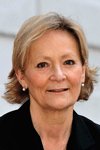
Biography:
Professor Dr. Barbara Koch studied Forest Sciences from 1977 to 1982 at the Ludwig-Maximilians University in Munich. From 1982 to 1994 she worked as a scientific staff member at the Institute of Land Use Planning and Nature Conservation at the Technical University of Munich (Ludwig-Maximilians University in Munich). Today Ms Koch holds the chair of Remote Sensing and Landscape Information Systems at the Albert-Ludwigs University of Freiburg. She has worked in numerous research projects on remote sensing and geo-modelling in the frame of forest and landscape analyses. At this time, she is Academic Dean of the Faculty of Environment and Natural Resources, board member of the Centre for Renewable Energy, Head of the working group on Education of the University Centre for Sustainability and Transformation and Vice-Chairwoman of the Senate commission.
Abstract:
For environmental information it is of importance to link data from terrestrial measurements with remote sensing. Often vast terrestrial data sets exist as point data however for environmental studies area coverage is needed. In addition often different data sets need to be fused or connected to produce new information layers. Today a suite of remote sensing data is available connecting through different scales and providing different data properties which is complementary for more adjusted information. This talk will describe new developments and provide examples how the combination of satellite remote sensing data linked to terrestrial data will enhance the information value. The examples will refer to information provision in the field of renewable energy but also include examples for biodiversity studies, biomass studies and information for landscape analyses.
Keynote Forum
Oyvind G Gron
Oslo and Akershus University, Norway
Keynote: Celebrating the centenary of the Schwarzschild solutions and Einstein’s prediction of gravitational waves and their detection by LIGO
Time : 09:30-09:55

Biography:
Oyvind G Gron is a Norwegian Physicist. He took the Cand. Real. Degree at the University of Oslo in 1973, majoring in Meteorology. He followed up with Dr. Philos. Degree in 1990 with a thesis on Repulsive Gravitation. He was appointed as a Professor at Oslo University College in 1994. He has also been Professor II at the University of Oslo since 1994. He has conducted research within the areas of general relativity, cosmology and classical electromagnetism. He has thrown new light on themes like the twin paradox, the physics in a rotating reference system and repulsive gravitation associated with vacuum energy. Together with Erik Eriksen at the University of Oslo, he has also studied properties of the electromagnetic field produced by accelerated electric charges. They have in particular shown how gravitation modifies such fields. He has also found new solutions to equations in Einstein's theory of gravity that describe time space where one can travel backwards in time. In several studies, he has focused on relativistic models of the universe. He has, among other things, shown that it is possible to interpret observations from cosmos so that the concept of dark energy is unnecessary. The relationship between gravitation and time and between gravitation and entropy are also themes where he has contributed several journal articles. He has 153 research articles, and has written 3 books on the theory of relativity published by Springer.
Abstract:
Schwarzschild presented his exterior and interior solutions a hundred years ago. They describe spacetime outside and inside an incompressible, spherically symmetric body. I give a review of these solutions and how they have been interpreted physically. Einstein predicted the existence of gravitational waves as a consequence of the general theory of relativity in June 1916. I briefly follow his thoughts about gravitational waves in the periods from 1016 to 1918 and from 1936 to 1938. The LIGO-detection of gravitational waves is reviewed. Consequences of this detection as investigated in later preprints are also discussed
Keynote Forum
Stanislav I Klimov
Russian Academy of Sciences (IKI RAS), Russia
Keynote: History and modernity of the study of Space Weather in Russia
Time : 09:55-10:20

Biography:
Stanislav I Klimov Born on 27 June 1937 in Tula region, Russia. He is Head of Laboratory for Electro - Magnetic Emissions Investigation, Department of Space Plasma Physics, Space Research Institute (IKI), Russian Academy of Sciences. S. Klimov graduated from Department of Physics, Moscow State University (1966), received Ph.D. of physics-mathematics in 1984, Doctor of Sciences of physics-mathematics in 1994. Now he is the Scientific Manager of ASPI experiment INTERBALL TAIL PROBE and APW-R Relict-2 wave and field experiments and WEC Cluster wave experiment Co-I. The laboratory he leads also includes the electrostatic and magnetic cleanliness and EMC group. Now this group uses the experience from the previous projects for the study of the electro-magnetic environment of the MIR orbital station and in the future experiments of the International Space Station. He has more than 100 publications. His research interest includes: Waves in solar wind /magnetospheres and comet plasma interactions, magnetospheric convection and magnetosphere-ionosphere coupling, interaction of the supper large bodies (orbital station) with ionosphere.
Abstract:
The so called “simplest satellite” (or PS object) was launched on October 4, 1957. It was followed by the second spacecraft that for the first time brought a living creature, Laika the dog, into space on November 3, 1957. Officially both launches were dedicated to the International Geophysical Year: July 1 1957 – December 31, 1958. And only then it was the turn of the satellite, which had originally had to be the first. Dubbed “The Third Sputnik”, it was already a full-fledged spacecraft sporting all the systems inherent to modern ones. For the first time onboard devices received and executed commands sent from the ground. Instruments built by seven different groups of Soviet scientists operated onboard the satellite. Research results were downlinked to the Earth.
- Track 02: Orbital Mechanics | Track 05: Satellite Remote Sensing and GIS | Track 06: Satellite Subsystems | Track 08: Satellite Communication | Track 09: Satellite Navigation | Track 15: LTE-based ground network and satellite networks

Chair
Barbara Koch
Albert-Ludwigs University of Freiburg
Germany

Co-Chair
Nicolas H Younan
Mississippi State University
USA
Session Introduction
Dennis Wingo
Skycorp Incorporated
USA
Title: ISEE III Reboot Project or How to Save an Interplanetary Spacecraft on a Shoestring Budget
Time : 10:35-10:55
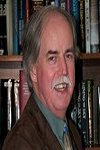
Biography:
Dennis Wingo is a CEO and Founder at Skycorp Incorporated, USA. He is having 36 Years of Industry Experience in the computer, academic, and aerospace industries. He worked for many leading edge companies during the 80's such as Vector Graphic, Symbolics, and Alpharel, pioneers in the computer, artificial intelligence, and document management industries. He has built flight hardware at the University of Alabama in Huntsville, including the first MacIntosh flown on the Space Shuttle and a small sat, SEDSAT 1, the first non NASA spacecraft built in Alabama. His first book, "Moonrush", and a chapter in another book "Return to the Moon" are about developing lunar resources. He contributed to a book "Toward a Theory of Space power" published by the National Defense University. He has written dozens of articles for various publications. I have two patents, one of them global.
Abstract:
The International Sun-Earth Explorer 3 (ISEE-3) was one of a three spacecraft constellation, two by NASA and one by ESA, designed to extensively explore the earth’s magnetosphere and its relationship to emissions from the sun across a wide range of frequencies and particle energies. ISEE 1 and 2 were placed in a tandem highly elliptical orbit around the earth while ISEE 3 was placed into the earth-sun libration point 1 (ESL-1) in a halo orbit around the ESL-1 location to better enable communications with the spacecraft. ISEE-3 was the first spacecraft to fly in this orbit and it and its companions were instrumental in many engineering firsts and a plethora of science regarding what we now call solar-terrestrial physics. ISEE -3 was reborn as the International Cometary Explorer (ICE) when in 1983, through a complex series of lunar/earth flybys; it was placed into an interplanetary intercept orbit to pass within 8,000 km of the comet Giacobini-Zinner through its tail on September 11, 1985. Later it was tasked to flyby Halley’s Comet at a 21 million km distance, and to provide complimentary support to the NASA/ESA Ulysses mission in the 1990’s. In the late 1990’s ISEE-3/ICE was placed into hibernation with only its transmitter beacons providing indications of its existence. NASA in February of 1987 placed the spacecraft into an orbital configuration that would bring it back to the earth moon system in August of 2014, this is where our story begins. The space agency had eliminated it ability to command the spacecraft with the removal of the equipment designed for that task from the Deep Space Network. Due to the cost of the agency redesigning and rebuilding the equipment, and the competing needs of existing operational missions, the agency decided to forgo any attempt to contact the spacecraft in February of 2014. On April 12 2014 NASA gave preliminary permission for a private effort, led by Skycorp Incorporated and Spaceref Inc., to raise money and attempt to contact, revive, control, and place back into Earth orbit the spacecraft. Through a milestone based Space Act Agreement Skycorp and Spaceref were able to raise the funds through crowd funding and build an international technical team that, a mere 54 days later was able to command the spacecraft into engineering telemetry mode. Over the succeeding two and one half months, this international team, with foci at the world’s largest antenna at the Arecibo National Observatory in Puerto Rico, the Amateur Radio Satellite Organization-DL at the Bochum Radio Observatory in Nordrhein-Westfalen Germany, the Morehead State University Science Center, the SETI Institute’s Allen Array in Northern California, and Skycorp at NASA Ames in Mountain View California developed an Ad-hoc global network of ground stations and operations to bring the spacecraft back to life, commission a majority of science experiments, and resume limited science operations. Due to a pressurization failure in the propulsion system the team was unable to place the spacecraft back into earth orbit but did reach significant engineering and science milestones for the veteran spacecraft. This is our story.
Nicolas H Younan
Mississippi State University
USA
Title: Information retrieval from Earth Observation (EO) imagery
Time : 10:55-11:15
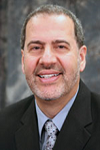
Biography:
Nicolas H Younan is currently the Department Head and James worth Bagley Chair of Electrical and Computer Engineering at Mississippi State University (MSU). He received the B.S. and M.S. degrees from MSU in 1982 and 1984, respectively, and the Ph.D. degree from Ohio University in 1988. His research interests include signal processing and pattern recognition. He has been involved in the development of advanced image processing and pattern recognition techniques for remote sensing applications, image/data fusion, feature extraction and classification, automatic target recognition/identification, and image information/data mining.
Abstract:
Earth Observations (EO) data are obtained from a multitude of sources and requires tremendous efforts and coordination among researchers and user groups to come to a shared understanding on a set of concepts involved in a domain. The ultimate goal of any EO system is to provide understanding, which will often require expertise and/or data sources from globally distributed resources, thus presenting unique challenges. To address these challenges, it is incumbent upon the global community to evolve and sustain a global observation network. These observations serve as the foundation for the models that are used to describe Earth processes. As this observational data accumulates in global archives, new opportunities become available for knowledge discovery about the Earth system. However, access to these observational data is optimized for the science teams for whom the instruments were launched and access by operational users may be problematic. This presentation will lay out some of the challenges for those engineers and scientists involved in pattern recognition in the Earth remote sensing arena. It describes the problem space for making decisions and introduces the concept of contextual remote sensing.
Barbara Koch
University of Freiburg
Germany
Title: Potential of different sensor combination approaches for the estimation of above ground biomass
Time : 11:15-11:35

Biography:
Professor Barbara Koch studied Forest Sciences from 1977 to 1982 at the Ludwig-Maximilians University in Munich. From 1982 to 1994 she worked as a scientific staff member at the Institute of Land Use Planning and Nature Conservation at the Technical University of Munich (Ludwig-Maximilians University in Munich). Today Ms Koch holds the chair of Remote Sensing and Landscape Information Systems at the Albert-Ludwigs University of Freiburg. She has worked in numerous research projects on remote sensing and geo-modelling in the frame of forest and landscape analyses. At this time, she is Academic Dean of the Faculty of Environment and Natural Resources, board member of the Centre for Renewable Energy, Head of the working group on Education of the University Centre for Sustainability and Transformation and Vice-Chairwoman of the Senate commission.
Abstract:
Space-borne sensors allow for wide-scale assessments of forest ecosystem assessments. Combining the products of multiple sensors are hypothesized to improve the estimation of forest biomass. We applied interferometric (Tandem-X) and photogrammetric (WorldView-2) predictors, e.g. canopy height models, in combination with hyperspectral predictors (EO1-Hyperion) using 4 different machine learning algorithms for biomass estimation in temperate forest stands near Karlsruhe, Germany. We also estimated the spatial distribution of timber volume to calculate the regional potential for lignocellulosic raw material. Here we used a combination of airborne Lidar with Landsat TM 7 data linked with terrestrial inventory net data. To enhance the accuracy we developed a socio-economic predictor regarding the ownership and size of the woods. Finally we tested the accuracy of canopy top elevation, ground elevation and vegetation height (VH) derived from space borne full-waveform LiDAR (Light Detection And Ranging) ICESat/GLAS data across forested areas, as basis for the estimation of biomass. Computed height metrics from ICESat/GLAS data were compared against airborne laser scanning (ALS) based digital elevation models. Due to the dynamic topography of the sites under investigation, a wide range of slope angles could be investigated. ICESat's raw waveform data (GLA01) and the land surface altimetry data (GLA14) products were used to determine height metrics with different methods. The presentation will provide results of the different methods and sensors for vegetation height assessment, derived estimations on timber volume and above ground biomass.
Valentine A. Yankovsky
St. Petersburg State University
Russia
Title: New methods for remote sensing of altitude profiles of the O(3P), O3 and CO2 in the daytime mesosphere and lower thermosphere
Time : 11:35-11:55

Biography:
Valentine A. Yankovsky is an Associate Professor in Atmospheric Physics of St. Petersburg State University (from 1990). In 1986 he has completed his PhD from SPBU “Laboratory studies of aeronomical reactions with participation of negative ions, excited oxygen atoms and molecules” which was been based on his investigation of processes in the glow discharge oxygen plasma. His main fields are the Atmospheric photochemistry in the MLT region, the Sensitivity and uncertainty study of complex photochemical systems and the Retrieval of ozone and atomic oxygen in the MLT. He has published more than 20 papers in reputed journals.
Abstract:
For daytime, the altitude profiles of concentrations of electronical-vibrationally excited molecules, O2(b1Σâºg, v=0, 1 and 2), depend on distributions of the O(3P), O3 and, partially, CO2 in the MLT region. It allows the use of emission bands originating from the O2(b1Σâºg, v= 0, l and 2) levels as a proxy for non-emitting, but it is very important for the atmospheric photochemistry, small components of the atmosphere. Contemporary model of O3 and O2 photolysis in the MLT, YM2011, has been investigated by methods of the sensitivity study and uncertainty analysis. It have been shown that simultaneously measuring of altitude profiles of two proxies concentrations, O2(b1Σâºg, v = 0) and O2(b1Σâºg, v = 1), allows to retrieve, simultaneously, profiles: [O3] and [CO2] in the range 50 – 90 km; [O(3P)], [O3] and, perhaps, [CO2] in the range 90 – 100 km (here, it is necessary to use a third proxy, O2(b1Σâºg, v = 2), in addition to the two above-mentioned); [O(3P)] and [O2] in the range 100 – 140 km. We believe that new remote sensing methods described above can be more fully realized as limb emission measurements from the satellite. Detailed description of the YM2011 model, database of the rate constants for aeronomical reactions, and applied analytical methods is given in the work: V.A Yankovsky et al., J. Mol. Spectrosc. (2016)
Roman Ya Kezerashvili & Elena Ancona
The City University of New York, USA
&
Polytechnic University of Turin, Italy
Title: Orbital dynamics of a solar sail accelerated by thermal desorption of coatings
Time : 11:55-12:15

Biography:
Roman Ya Kezerashvli, Ph.D, D.Sc. in Theoretical Physics, has published over 170 papers, Professor of Physics, Corresponding Member of the International Academy of Astronautics.
Elena Ancona, Master of Science in Aerospace Engineering, 2016 from the Polytechnic University
Abstract:
For extrasolar space exploration it is convenient to take advantage of environmental effects, such as solar radiation heating, to accelerate a solar sail coated by materials that undergo thermal desorption at a particular temperature, reached at a particular heliocentric distance. This physical process of mass loss can provide additional thrust. We focus on the orbital dynamics of three scenarios that only differ in the way the sail approaches the Sun; in every case once the perihelion is reached, the sail coat undergoes desorption. When the process ends, the sail escapes the Solar System having the conventional acceleration of solar radiation pressure. We compare scenarios in which thermal desorption comes beside traditional propulsion systems, and they are the following: i. Hohmann transfer plus thermal desorption. The sail is carried as a payload to the perihelion with conventional chemical propulsion by a Hohmann transfer from Earth’s orbit to an orbit very close to the Sun (almost at 0.1 AU) and then deployed there. ii. Elliptical transfer plus Slingshot plus thermal desorption. In this case the transfer occurs from Earth’s orbit to Jupiter’s orbit where a Jupiter’s fly-by leads the sail close to the Sun, where it is deployed. iii. Two stage acceleration of the solar sail through thermal desorption. The sail has two coats of materials that undergo thermal desorption at different temperatures, so at different distances. The first desorption occurs at the Earth orbit and propels the sail toward the Sun, where the second takes place.
JoaquÃn Alonso Montesinos
University of AlmerÃa
Spain
Title: Cloud detection in the sun area of total sky images using a conventional and a low-cost sky camera
Time : 12:15-12:35

Biography:
Joaquín Alonso Montesinos has completed his PhD at the age of 26 years from the University of Almería, Spain and postdoctoral studies from the same University. He is member of a research group ‘Solar energetic resources, Climatology and Atmospheric physics’ at the University of Almería. He has published more than 10 papers in reputed journals, has authored and coauthored different conference papers, both national and international, and has participated in different projects related to solar radiation. Furthermore, he is serving as reviewer in different impact journals.
Abstract:
In the search of technologies for improving the use of solar energy, remote sensing techniques has been widely employed for different purposes. In that sense, a great variety of resources are available in the market, and whole-sky cameras with fisheye lens have supposed a novel procedure for the solar resource assessment. The hemispherical vision of this kind of cameras provides real-time sky images where the different atmospheric features can be identified. However, saturations in the sun area provoke situations where the pixels can be mistakenly identified as clouds when the sky is free of clouds. In this work, two sky cameras with two different image processing have been used to identify clouds in the solar area: firstly, a sky camera (TSI-880 model) with rotating shadow band was used to identify clouds in the sun area following an algorithm based on direct normal irradiance (DNI); whereas the second methodology is based on a low-cost sky camera without the use of DNI. For two cameras, the solar area was processed to identify clouds according to an image processing based on the different channels from the images. In this case, both methodologies presented a cloud identification success rate higher than 90% for all sky conditions, being more accurate the low-cost camera in some particular situations.
Pier Matteo Barone
The American University of Rome
Italy
Title: From space to Earth: the GPR frontiers
Time : 12:35-12:55

Biography:
Pier Matteo Barone is an adjunct faculty member of the American University of Rome teaching courses on Archaeology, Geophysics, Geoarchaeology, Remote Sensing, and Forensics, as well as courses on the Preservation of Cultural Heritage. He is a recognized expert in Forensic Geoscience employed to testify in criminal and civil cases. He is currently engaged in a three-year research project with the geological institute of CNR investigating marble quarries of the Greco-Roman world. He is an official reviewer in several peer-reviewed international journals, and he published more than 50 papers on peer-reviewed international journals on the above-mentioned topics.
Abstract:
Ground Penetrating Radar (GPR) has become the most important physical technique in Earth investigations, allowing the detection of targets with both very high vertical and horizontal resolution, and has been successfully applied in both different fields and aims of the Earth Sciences. The scope of a geophysical measurement is the detection of the “boundaries” between objects having different values of a specific physical property. The contrast between the searched target and the background should be strong enough to be detected “at distance”, i.e. it should be able to generate a measurable relative spatial variation of a physical quantity at surface. GPR technique uses radio waves to create remotely an electromagnetic image of structures and features buried in the ground. The uses of such a remote sensor are numerous: to test the equipment to its maximum potential under a variety of conditions due to construct roving vehicles for landing on Mars; to reconstruct the evolutionary history of the lava flows in an active volcano; to monitor soil water content for agriculture; to find the lines of walls in archaeological excavations; to examine the wall paintings; to assess the structural stability or damages of buildings; and, also, to help law enforcement to solve crime. The “sensitivity” of the electromagnetic waves makes this instrument very powerful in remotely and non-invasively detecting both terrestrial and extraterrestrial targets.
Pier Matteo Barone
The American University of Rome
Italy
Title: From space to Earth: the GPR frontiers
Time : 12:35-12:55
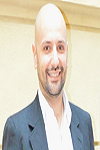
Biography:
Pier Matteo Barone is an adjunct faculty member of the American University of Rome teaching courses on Archaeology, Geophysics, Geoarchaeology, Remote Sensing, and Forensics, as well as courses on the Preservation of Cultural Heritage. He is a recognized expert in Forensic Geoscience employed to testify in criminal and civil cases. He is currently engaged in a three-year research project with the geological institute of CNR investigating marble quarries of the Greco-Roman world. He is an official reviewer in several peer-reviewed international journals, and he published more than 50 papers on peer-reviewed international journals on the above-mentioned topics.
Abstract:
Ground Penetrating Radar (GPR) has become the most important physical technique in Earth investigations, allowing the detection of targets with both very high vertical and horizontal resolution, and has been successfully applied in both different fields and aims of the Earth Sciences. The scope of a geophysical measurement is the detection of the “boundaries” between objects having different values of a specific physical property. The contrast between the searched target and the background should be strong enough to be detected “at distance”, i.e. it should be able to generate a measurable relative spatial variation of a physical quantity at surface. GPR technique uses radio waves to create remotely an electromagnetic image of structures and features buried in the ground. The uses of such a remote sensor are numerous: to test the equipment to its maximum potential under a variety of conditions due to construct roving vehicles for landing on Mars; to reconstruct the evolutionary history of the lava flows in an active volcano; to monitor soil water content for agriculture; to find the lines of walls in archaeological excavations; to examine the wall paintings; to assess the structural stability or damages of buildings; and, also, to help law enforcement to solve crime. The “sensitivity” of the electromagnetic waves makes this instrument very powerful in remotely and non-invasively detecting both terrestrial and extraterrestrial targets.
Luiz Sampaio Athayde Junior
Federal University from Bahia
Brazil
Title: The theory of solar zenith – Proposed new rules for the seasons of year in intertropical locations focusing Salvador Bahia
Time : 13:30-13:50

Biography:
Luiz Sampaio Athayde Junior Professor of Astronomy Course of Physics Institute (IF/UFBA) of Federal University of Bahia (FCC/UFBA), also Professor and the University Jorge Amado (Unijorge), and has experience as a Tax Analyst. A Master in Business Administration and Extension in Higher Education Methodology by the School of Administration of Federal University of Bahia (EA/UFBA), Post Graduate MBA in Financial Management and Company by Post Graduate and Research Center at Visconde de Cairú (CEPPEV/FVC). Accountant and Degree Bachelor of Accounting Sciences by Estacio University Center of Bahia (Estacio/FIB) and is certified by IAFC First Degree in International Financial Reporting Standards-IFRS.
Abstract:
The seasons occur across the planet because of the inclination of its longitudinal imaginary axis. The translation of the earth shows the four different astronomical positions, which help to define the four seasons, lasting ~ 90 days each. They are set also by weather patterns and the incidence of the sun throughout the year in the tropical zone, it makes the differences become more subtle, damaging its conceptualization in the region. Their differences are more bounded outside the tropics, in the dominant countries, which have created these rules and imposed through literature for northern colonized countries such as ours. The sun towards on Salvador ~ 27/10, far before the official summer, therefore, the city receives its rays back the pin, ~ 15/02, which would date the fall in the official rules. The summer of Salvador should be considered on September 12th, a date prior to the first solar zenith 45 days until April 1, 45 days after the second, because the heat comes before summer officially and lasts much longer, with high temperatures since before Spring official until after the fall, which would justify the modification. The differentiated system of direct sunlight, twice a year between the tropics, highlighting the need for different standards for stations in these localities are, however, it is taught the same rules of the temperate zone. Different companies need different types of education as long as it is taught by the master minds of education, knowledge acquisition is made by the subject's interaction with the environment, and knowledge is built with the approximation of reality by men, therefore, would be more correct to teach rules that are consistent with the observed reality in different localities, especially with the possibility of flowing information, update observation, and the presence of new technologies available for education.
Victor V Ionov
St. Petersburg State University
Russia
Title: Synoptical monitoring of climatic thermic fronts on the surface of the Southern Ocean by means of satellite remote sensing and in situ measurements
Time : 13:50-14:10
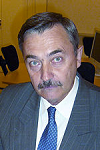
Biography:
Victor Ionov graduated from SPb (former Leningrad) State University in 1971. He has completed his PhD in Oceanology at the age of 31 years from St. Petersburg State University and was an exchange researcher at the Department of Oceanography, Florida State University, Tallahassee, USA, for seven months in 1984. He is Assoc. Prof., Department of Oceanology and Director of Division of Baltic and Arctic Projects SPbSU. He has published more than 25 papers in reputed journals and took part in several marine Antarctic Expeditions.
Abstract:
The Southern Ocean contains several oceanic fronts that together form the largest Antarctic Circumpolar Current. The methodology of synoptical monitoring of fronts is based on observations during the seasonal maritime operations for supply of Russian Antarctic stations. It happens by use of continuous registrations of variability of horizontal gradients of temperature of sea surface layer (SSLT) in situ, and horizontal gradients of surface temperature (SST) from satellite infrared (IR) data, which are taken in real-time on board of research vessel. This makes possible more detailed definition of the horizontal gradients of thermic characteristics and latitudinal extent of the fronts zones. It can be done by means of continuous data of SSLT from vessel’s automatic meteorological station, with simultaneous GPS-registration of their spatial location, on the one side; and by precise definition of geographical position of fronts zones of SST from satellite high resolution IR-images of the ocean surface, on the other side. Such data obtained during regular sub-meridional voyages of research-supply vessels between Africa and Antarctica, helps more confident than before to judge about presence/absence of trends in inter-annual changes in the latitudinal location of the main fronts in the Southern Ocean. Such a trends can be considered as an evidence of substantial change of water circulation and as the manifestations of global warming in the Ocean surface layer. During 2009‑2015 tendency in inter-annual shifts of seasonal positions of climatic fronts to the north or south on the surface of the Indian sector of the Southern Ocean, is not appeared.
Mikhail Yu. Puzachenko
Institute of Geography RAS
Russia
Title: Using multispectral and hyperspectral satellite imagery in ecological and geographical studies
Time : 14:10-14:30

Biography:
Puzachenko M.Y. has completed his PhD at the age of 32 years from Institute of Geography RAS and postdoctoral studies from Institute of Geography RAS. He is the Senior Researcher in Physical geography and Environmental management Department. He has published more than 30 papers in peer reviewed journals and has been a member of more than 15 national and international sciense projects.
Abstract:
Multi and hyperspectral measurements have been suggested as the method of assessment the state of ecosystems. Two approaches are considered: without and with the use of field data. In the first case the calculation of the thermodynamic variables (absorption of solar energy, Kullback information, the entropy of the reflected solar radiation, exergy) of the system, using the solar constant as reference, is used. Types of thermodynamic states of the system are estimated by dichotomous cluster analysis. Such states are usually well associated with known types of vegetation. The same cluster analysis is used on initial measurements of the spectral reflection with selection of the best metrics based on the principle of maximum entropy. This approach allows to differentiate the ecosystem with different forms of solar energy usage and different functioning and also to assess the ecosystems organization. The second approach is based on a regular step measurements along the transects. All points of transect are merged with spatially corresponding thermodynamic and reflectance variables for a different dates of a year. Multidimensional analysis is used to determine the systemic linkages between state of vegetation and soils on the one hand, and thermodynamic and reflectance variables on the other hand. As a results, informativity of remote measurements, its seasonal dynamic and physical basis were obtained, also the factors determining the solar energy usage, and ecosystems maps based on state of ecosystem, which are most connected with the solar energy conversion, were obtained. This study was supported by the RSCF grant 142700065.
Ebrahim Taherzadeh Mobarakeh
Ground Data Solutions R&D Sdn Bhd
Malaysia
Title: Impervious surface detection using very high spatial resolution satellite data
Time : 14:33-14:50
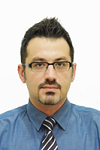
Biography:
Dr Ebrahim Taherzadeh was born in Isfahan, Iran in 1982. He received his PhD degree on Spatial Information Engineering from University Putra Malaysia in 2014. His PhD thesis was focused on the development of generic models to extract the roof materials using high spatial resolution satellite imagery. Currently he works as Remote Sensing Specialist at Ground Data Solutions R&D Sdn Bhd, a Malaysian LiDAR survey and mapping service provider. His major research effort includes urban remote sensing using high-resolution data, Hyperspectral and LiDAR data. He has published around 10 technical papers in these areas in international conferences and journals.
Abstract:
Satellite remote sensing data is considered as very important source of information and tool for data analysis and visualization. The detection of impervious surface (IS) in heterogeneous urban areas is one of the most challenging tasks in urban remote sensing. With the advent of very high spatial resolution such as Worldview-2(WV2) we are able to utilize high spatial and spectral information which is inherent in this type of image. This presentation investigates how this satellite data is currently being used to better detect and discriminate IS. In this presentation we will present mainly two case studies one on road and another on roof materials. In detail development of spectral index to extract road network automatically and generic model extraction for detection roof materials using WV2 satellite imagery will be discussed and addressed.
Seong Chan Jun
Yonsei University School of Mechanical Eng
Korea
Title: Enhanced chemical vapor sensing by single-stranded DNA-graphene
Time : 14:50-15:10

Biography:
Seong Chan JUN has completed Bachelor, master and Ph.D. degree from George Washington University (Washington D.C.), Cornell University (Ithaca N.Y.), and Columbia University (New York, NY) respectively. After he graduated, he worked at NSEC (Nano Scale Science & Research Center) and SAIT (Samsung Advanced Institute of Technology) sequently. He has been currently appointed professor at Yonsei University (Seoul, Korea) since 2008.
Abstract:
Sensor platforms lie at the heart of biochemical sensing applications. The efforts, especially for applying functionalized graphene devices have been recently highlighted in the field of biochemical sensors. However, chemical vapor sensors do not guarantee their sensing ability in high humidity since the electrical measurement is easily degraded by water molecules.
Dorian Gorgan, Victor Bacu, Constantin Nandra
Technical University of Cluj-Napoca
Romania
Title: WorDeL Language – Tutorial on flexible description of Earth Observation Data Processing
Time : 15:30-17:30
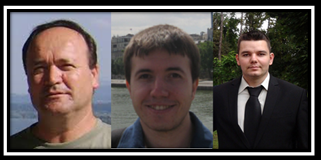
Biography:
Dorian Gorgan is Professor in Computer Science Department of the Technical University of Cluj-Napoca, PhD supervisor in Computers and Information Technology, and coordinator of the Computer Graphics and Interactive System Laboratory (http://users.utcluj.ro/~gorgan). The fields of interest involve parallel and distributed processing over HPC infrastructures such as Grid, Cloud, Multicore, and cluster, development of platforms and applications for spatial data processing and visualization, interdisciplinary research in the domains of Earth Sciences and Earth Observations. He has been involved as scientific coordinator and WP leader in national and international research projects such as BIGEARTH, PECSA, enviroGRIDS, IASON, SEE-GRID-SCI, GiSHEO, mEducator, iTRACE, MedioGrid, COMPLEXHPC, and KEYSTONE. He has been member of scientific and reviewing committees of many ISI journals and international conferences, and gave more than 300 papers and presentations in journals and prestigious conferences in the domains of Computer Science and Earth Observation.
Abstract:
The main issues of Big Data in Earth Observation (EO) domain are the volume and velocity of data acquired by an increasing number of aerial and space-borne sensors, but as well the complexity of data mining process. The sheer volume and acquisition rates may threaten to overwhelm many organizational storage capabilities, leading to situations in which data value is overtaken by storage costs, which will, in turn, lead to loss of data. Data can create value only when it is used, and the data protection has to be oriented toward allowing innovation that sometimes depends on creative people, which achieve unexpected valuable results through a flexible and adaptive manner. The users need to describe and experiment themselves different complex algorithms through analytics in order to valorize data. The analytics uses descriptive and predictive models to gain valuable knowledge and information from data analysis. This tutorial aims to exemplify some of the main features of WorDeL (Workflow Description Language), and demonstrate their usage in defining Earth Data processing tasks. The WorDeL language is based on the flexible description of processing tasks as workflows, composed of basic processing operators. With this approach, the language offers an intuitive way of representing processing tasks, without requiring programming expertise from its users. It also allows its users to employ and integrate existing functionality into their design, thereby reducing the complexity and development effort of newly defined processing workflows.
Hamisai Hamandawana
University of Fort Hare
South Africa
Title: Unveiling the first high resolution satellite mosaic coverage of Botswana’s Okavango Delta
Time : 17:30-17:50
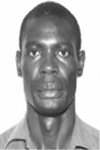
Biography:
Hamisai Hamandawana is Associate Professor and head of the University of Fort Hare’s Department of GIS & Remote Sensing with research interests in the application of GIS and Remote Sensing to global climate change investigation. He taught GIS, Remote Sensing at the university of Botswana and North West University in South Africa and was GeoInformatics Programme manager for South Africa’s Agricultural Research Council. He has to date conducted several government consultancies, published more than 30 journal papers and reports, presented more than 25 papers at international conferences and served as expert reviewer of the Millennium Ecosystem Assessment Report.
Abstract:
In 2007 Hamandawana et.al, published a paper in Vol 10 Issue 1 of the International Journal of Remote Sensing which proposed a ground-breaking methodology on how to georeference and mosaic CORONA photographs. These high resolution (2m) panchromatic photographs were acquired by the US military during the Cold War between June 1959 and May 1972 in order to gain military intelligence by spying on the Soviet Union, China and the rest of the world in an undercover surveillance program code-named CORONA. Although CORONA photographs provide one of earliest photoreconnaissance datasets immensely useful for long-term change investigation by extending the temporal coverage of remotely sensed images into the historical past by nearly a decade prior to the launch of Landsat I in 1972, their utility has been constrained by difficulties in compiling large area coverages because they exhibit substantial geometric distortions and exponential brightness variations that are difficult to correct. This presentation will attempt to bridge this gap by sharing with those interested, the first and only available complete CORONA mosaic coverage of the Okavango Delta on 15 September 1967. It is hoped that the remote sensing community will tap on this dataset to provide useful insights on controversies surrounding the transient / non-transient nature of environmental change in this sub-region during the recent historical past.
Meryem Tahri
University Hassan II
Morocco
Title: The evaluation of solar farm locations applying Geographic Information System and Multi-Criteria Decision-Making methods: Case study in southern Morocco
Time : 18:00-18:20
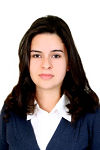
Biography:
Meryem TAHRI was born on November 7, 1988 in Casablanca, actually, she is 3rd year PhD student from university Hassan II Casablanca in discipline of geoscience and environnement. She got the industrial engineering diploma specialized in supply chain and logistics at the age of 24 at ESITH engineering school in Casablanca. she has published a paper in reputed journal. Her speciality is geomatic, decision support system in the environmental ressources and multi-hazard and multi-risk studies supported by EO Data. She participates in a wide range of oral communication and poster presentation. She also started her musical studies at the age of 8, she is actually a professor of piano at the municipal Casablanca conservatory.
Abstract:
The extraction and burning fossil fuels such as coal or petroleum cause the release of carbon dioxide and other global warming pollutants in the atmosphere covering a coat in the planet and puts the earth in danger, several studies recognized the renewable energy resources are as clean sources, governments are already working hard to cut greenhouse gases. Environmental policies are currently largely devoted to fostering the development and implementation of renewable energy technologies in Morocco. This work studies the outcome of combining both Geographic Information System (GIS) tools and the Multi-Criteria Decision-Making (MCDM) method to assess the suitability of a certain set of locations to carry out a renewable energy project. For the sake of concreteness, we consider the case of the Ouarzazate photovoltaic solar energy project, which is located in the southern region of Morocco and aims to be connected to the national power grid of the country. Four criteria were used : location, orography, land use and climate and the Analytical Hierarchy Process (AHP) was used to calculate the corresponding criteria weights. These criteria can be subdivided into seven factors : land use, slope, slope orientation, distance to urban area, distance to road, potential solar radiation and land surface temperature. Climate turns out to be the most important criterion since it defines the potential electricity production of a certain photovoltaic field. Next comes orography, which reveals the steepness or gentleness of the slopes in a particular area. Finally, regarding the location criterion, the most suitable sites are those where the ground is flat and oriented towards the south. The features of a particular area were sorted into five classes:“unsuitable”, “marginally suitable”, “suitable”, “moderately suitable” and “highly suitable”. The outcomes of the study are shown in figure 5. According to our GIS model, a very large proportion of the area, more than 59%, corresponds to highly suitable land for photovoltaic field projects. It is worth mentioning, however, that other lands representing only about 26% were not considered in this assessment, as they are either cultivated or urbanized. As much as 23% of the land is the most suitable and lies in the region of Ghassate in the east whereas the least suitable areas represent 1% and are located in the south and west. In spite of the high potential solar radiation and the land surface temperature, these areas are found in mountainous zones. The overlay layer results obtained after applying spatial analysis showed that the majority of the land in Ouarzazate has a high suitability for photovoltaic farm installation. The high potential solar radiation, the land surface temperature and the orientation towards the south are unsurprisingly the key factors that increase the suitability of a land
Sunil C. Joshi
Nanyang Technological University
Singapore
Title: Changing Paradigm in Satellite Design, Development and Assembly with 3D Printing
Time : 18:20-18:40

Biography:
Sunil C. Joshi obtained his M.Tech. Degree in Aeronautical Engineering with aircraft structures specialization. He received his Ph.D. degree from Monash University (Australia). Prior to that, he worked as a Scientist at National Aerospace laboratories, Bangalore, India, from 1988 to 1994. He has been an academic staff in School of Mechanical and Aerospace Engineering since 2000, presently as part of Aerospace Engineering cluster. His expertise lies in the domain of Aerospace Materials and Structures, and his teaching includes courses such as, Advanced Materials Engineering, and Structures and Materials. He has been the chairperson of the accreditation committee that works towards the accreditation of the BEng (AE) programme. He was the member of XSAT, Singapore’s first in-house designed and developed micro-satellite, team where he served as the team leader for thermal controls sub-system. Currently, his work involves nanosats and their thermal and mechanical design and behaviour.
Abstract:
3D printing has evolved with time into a matured process for being able to manufacture functional parts and structures gaining widespread attention in aerospace industry. It has started changing the satellite design philosophy. Designs can now be customized to ease assembly, optimize the space and reduce the overall weight. A design model of a plastic CubeSat structure fabricated employing Fused Deposition Modelling (FDM) process is presented. The CubeSat was designed to make assembly easier, possibly by hand, with minimum fasteners. This design ensured that there were no overhanging parts thereby eliminating use of any support material during printing, and it required no surface finishing. Closing or solar panels can be attached to this CubeSat frame without any screws. Essentially this design was easy-to-assemble using only 8 thumb screws in total. Prototypes of the designed CubeSat were printed in ABS to validate the tolerances. The entire sub-systems and payload layout was printed and put together to understand the usage of the available volume. This type of prototyping makes satellite design, development and assembly less complex and easy to visualise. Such designs can potentially be used to 3D print the structure in different environmental or print conditions such as off-world manufacturing.
Lotfy Kamal Azaz
Menofya University
Egypt
Title: Detecting coastline changes using gis and remote sensing, a case study from oman
Time : 18:40-19:00
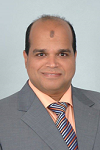
Biography:
Lotfy Kamal Azaz is an Associate Professor in Geography department, Faculty of arts, Menofya University, Egypt. He has obatined his PhD in GIS and Urban Planning from School of Civil Engineering and Geosciences, and school of Architecture, Planning & Landscape, Newcastle University (UK). He has more than 20 Years total experience in teaching research, and Community service in the universities in Egypt, UK, and Oman. Moreover, He has more than 20 Years total experience in managing GIS and Remote sensing projects from conception to completion in Egypt, UK and Oman. He has published a number of books, articles in the fields of GIS and remote sensing applications. He acts as a reviewer for some international and regional journals.
Abstract:
Detecting changes are one of the most interesting applications of remote sensing and GIS. Change detection often involves comparing satellite imagery of the area taken at different times. Change detection has been widely used to assess deforestation, urban growth, impact of natural disasters and use/land cover changes. Coastal erosion can be detected as well by the same methods. Coastal erosion is a universal phenomenon because of sea level rise, which is considered a result of climate change. This paper aims to detect and measure coastline changes of Wedam_Alsahel area, Batinah, north of Oman using GIS and remote sensing. For this purpose, two satellite images were used. The first one is IRS image acquired in 1998, while the second one is IKONOS image acquired in 2008. The images were geometrically corrected. Spatial resolution of IKONOS image was modified to conform to spatial resolution of IRS image to perform comparison between images. Coastline was identified and digitized in both images, and then coastline changes were measured in many locations along the coast of the area of study. The size of coastline erosion ranged between 50.81 meter and 112.27 meter. The average coastline erosion is 8.78 meter annually. This size of change is very hazardous and it has great impacts on the population and environment. This critical issue needs to be managed. The study introduced some recommendations to deal with this phenomenon.
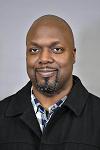
Biography:
Trevor Watkins is an assistant professor at Kent State University, where he serves as subject librarian for Chemistry, Computer Science, Liquid Crystals Institute, Mathematics, Physics, Engineering, Technology, and Military Science in University Libraries. He has over a decade of experience designing, integrating, migrating and deploying systems and networks. His research interests include developing systems using autonomous software agents and bio-inspired algorithms. He sits on the board of CTEST laboratories, where he often voluntarily contributes to the research and development of Epistemological and Hermeneutical systems based in software. He is a professional member of both IEEE, and ACM (SIGAI).
Abstract:
NASA’s Deep Space Network (DSN) is a network of satellites, antennas, and interplanetary probes. While effective, the current two-way communication link used for probe control and data collection, has some limitations. This paper dicusses how to scale and improve the current Deep Space Network by integrating a new peer-to-peer mesh satellite architecture based on Artificial Bee Colony Algorithm (ABCA) using autonomous cooperative agents. This paper is divided into three parts. First, the architecture is discussed. It is composed of a new central semantic routing algorithm between satellites, a data forwarding mechanism, and a winter cluster resiliency scheme. Second the interaction, responsibilities, and cooperation between autonomous software agents that govern each satellite is discussed. Finally the integration of this infrastructure with the existing DSN infrastructure is discussed.
Zhongping Lee
University of Massachusetts Boston
USA
Title: Secchi disk depth: evaluation of an algorithm based on new visibility theory

Biography:
ZhongPing Lee got his Ph.D in 1994 from the University of South Florida. Dr. Lee is currently a Professor at the School For the Environment of the University of Massachusetts Boston. Dr. Lee’s main research interests are in oceanic light field, algorithms for sub-surface properties from measurements of ocean color, as well as applications of ocean color products for the study of aquatic environments. He led the development of the quasi-analytical algorithm (QAA) and the Hyperspectral Optimization Processing Exemplar (HOPE) for processing of both optically deep- and shallow- waters.
Abstract:
Secchi disk depth (ZSD), a measurement of the maximum viewable depth of a white or black-and-white disk with a diameter about 30 cm when lowered into water, holds the longest (from at least 1880's) records of water transparency. This ZSD data record is found not only important for the study of climate change, but also useful for seagoers. However, there has been no standard ZSD product from all satellite ocean color missions. This may in part lie in that there was no robust algorithm to estimate ZSD of global oceans from ocean color measurements, although numerous empirical relationships were developed for various locations. In addition, the classical visibility theory suggests that ZSD is proportional to the inverse of (K+c), with K the diffuse attenuation coefficient and c the beam attenuation coefficient. Because c is significantly (2-5 or more) larger than K and that c could not be analytically retrieved from ocean color remote sensing, it has been perceived that there could be no analytical or semi-analytical algorithm for ZSD from ocean color measurements. A recent study found that this classical interpretation of ZSD is flawed, and a new theoretical relationship is developed for ZSD. With concurrent measurements of ZSD and remote-sensing reflectance (Rrs) of wide range of aquatic environments, the performance of the estimation of ZSD with Rrs as inputs by the classical and the new approaches is evaluated. The excellent results of the new relationship indicate a robust system to produce global ZSD from satellite ocean color measurements.
Miah Muhammad Adel
University of Arkansas at Pine Bluff
USA
Title: Spatial and temporal features of particle precipitation at low- and Mid-latitudes zones
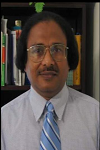
Biography:
Miah Muhammad Adel after completing his M. Sc. degree in physics in 1974 at the age of 22, he started teaching in the same department at Rajshahi University, Bangladesh. On study leave abroad, he completed his Ph. D. degree in space physics and astronomy from the Louisiana State University (LSU)-Baton Rouge, USA, in 1988, and started working as an assistant professor of physics at the University of Arkansas at Pine Bluff (UAPB). He worked with the US Air Force S81-1 mission data at LSU and Japanese EXOS-C satellite data at UAPB. He is now working with the Belgium’s PROBA-V/EPT data. He developed expertise in surface water hydrology, and published six books on the Ganges basin. Also, he authored a book on lightning protection. In both disciplines, he published more than 50 articles.
Abstract:
EXOS-C observed precipitation of protons of energy 0.64 – 35 MeV and electrons of energy 0.19 -3.2 MeV parallel to the geomagnetic equator in the low-latitude region, mid-latitude region, and the auroral region in order of increasing intensities during the time interval (1984-86). The detector efficiency shows that the locally mirroring particles (pitch angle 90 degrees) outnumber those of other pitch angles. In the low-latitude region, the electron peak flux lies in the L- range of 2-2.2, and the proton peak flux between L=1.8 to 2.0. In the mid-latitude region, proton peaks lies between l = 2.2 to 2.4. The peak value of the particle population lies between 650 and 700 km. The particle population shows no longitude dependence within 140o to 360o. There is a shortage of data points in the other longitude range. In certain passes of the satellite, electron counting rates outnumber the proton counting rates and in some other passes the opposite effect occurs. Either altitude variation or a temporal variation or both may play a role for this opposing effect. No local time variation was found.
Aliakbar Rasuly
Macquarie University
Australia
Title: Real-time monitoring and synchronized processing of dust storms Western parts of Iran

Biography:
Aliakbar Rasuly has completed his Ph.D. in Geosciences at Wollongong University, Australia in the year 1997 and MS in Geomorphology at University of Tabriz, IRAN in the year 1987. He is the Professor in Geosciences, Department of Environmental Sciences at Macquarie University, Sydney - Australia & RS & GIS Department, University of Tabriz, Iran.
Abstract:
The real-time monitoring of the weather and climate conditions by means of multi-spectral satellite images has become increasingly important during the past decades, in context of a modern geography. Subsequent synchronized image processing procedure is currently linked to discover all possible variations in environment and climate changes, mostly interleaving catastrophic impacts throughout of Iran. This study demonstrates how satellite images are being captured by a local satellite receiving station, mounted in the University of Tabriz. Associated Grabber software receives, archives, processes and displays data from NOAA Advanced Very High Resolution Radiometer (AVHRR) and MODIS/TERRA/Aqua images. Relevant images are being capturing by a land-based 1.8 m parabolic dish rotator and equipment rack with a receiver, ingest PC, a number of server host computers and distributed network switches. All allied hardwares and softwares provide fully automatic control of an advanced stabilization weather capturing system, intentionally the days with duststorm events. Purposely ingested data have been primary processed applying an automatic preprocessed setting and output images were subsequently taken into a non-popular image processing package; as a programming palette inside the iDAP & MacroPro softwares. Subsequently, a formula palette was defined with a complete range of functions in calculating of different duststorm indexes; such as: BTDI and AVI (adjusted for AVHRR images) and followed by BTA, NDDI, TDI and DP (adjusted for MODIS images) have been steadily applied. All processed images were exported to ArcGIS setting and ultimate dust maps have been lastly modeled.
David Hartshorn
Global VSAT Forum (GVF)
UK
Title: Satellite Communications: Global Technology, Market & Regulatory Trends
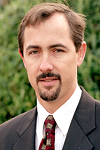
Biography:
David Hartshorn has more than 20 years of experience in the satellite communications industry. He serves as Secretary General of the Global VSAT Forum (GVF), the non-profit global association of the satellite communications industry. GVF includes more than 200 member organizations from every major region. Hartshorn leads the organization's regulatory and market-development programs to facilitate the provision of satellite communications.
Abstract:
Advances in satellite communications technology are now enabling service providers to provide fixed and mobile applications throughout global enterprise and consumer markets at an unprecedented level. In addition to millions of fixed VSATs, market demand is raising for "Satcom on the Move" and "Satcom on the Pause" systems that are bringing broadband to planes, trains, ships and other mobile platforms. Meanwhile, new variables are being added to an increasingly complex equation: Internet of Things, Big Data, High Throughput, and non-geostationary mega-constellations of small satellites to name a few. As satellite technology pushes the performance envelope, major challenges are being presented to government decision makers: Licensing, landing rights and other regulatory considerations are being revisited to ensure that the right balance is struck between market access and interference prevention. Spectrum pressure is rising from within the satellite industry as well as from external sources. For example, interests vying for satellite spectrum include the wireless sector, which is seeking access to satellite bands for delivery of WiMAX, LTE and 5G. Governments weighed in on regulatory and spectrum questions during last year's ITU World Radio communications Conference and, while key decisions were made, regulatory and spectrum matters are very much a work in progress. This presentation will provide an overview of today's trends from the perspective of the Global VSAT Forum, an international association of the satellite communications industry, which comprises the manufacturers, operators and service providers that are applying these innovations worldwide.
Ben Jarihani
University of the Sunshine Coast
Australia
Title: Studying hydrological processes in dry land landscapes: Can satellites help in data-poor regions?

Biography:
Ben Jarihani is a postdoctoral research fellow at Sustainability Research Centre, University of the Sunshine Coast working on erosion estimation and sediment transport modeling with collaboration with CSIRO. He received bachelor and master of engineering in irrigation, drainage and water resources management (1996-2001), followed by eight years industry work experience as a professional water engineer, hydrologist and project manager. He has done his PhD in hydrological sciences at University of Queensland, Australia with collaboration with CSIRO (2011-2015) entitled “developing remotely-sensed data approaches to studying hydrological processes in data-poor dry land landscapes”. Dr. Jarihani research interests include application of remote sensing and geographic Information system in water resources management and hydrological/hydrodynamic modelling. He has published several papers in reputed journals and has been serving as an active reviewer of repute. He received European Geosciences Union 2011Outstanding Student Poster awards in hydrological science, The University of Queensland Research Scholarship and The Integrated Natural Resource Management top-up scholarship from CSIRO.
Abstract:
Drylands occupy one third of the Earth’s surface and are home to around 400 million people, yet the water resources of these regions are often poorly understood because of a lack of fundamental hydrological data. Thus fundamental questions of (eco) hydrological function of these river systems cannot be understood at a detailed scale. Earth observation satellites have been proved to provide data and information on water cycle in multiple spatio-temporal scales. This research project aims to develop remotely-sensed data approaches in order to improve our understanding of hydrological processes in data-sparse dryland landscapes. Four objectives were investigated: (i) to evaluate the accuracy and effectiveness of satellite derived altimetry data for estimating flood water depths in low-gradient, multi-channel rivers; (ii) to detect and map flood extents and optimise the trade-off between image frequency and spatial resolution using Landsat and MODIS satellites imagery; (iii) to assess satellite-based Digital Elevation Models (DEMs) accuracy for hydrodynamic modelling; and (iv) to use a hydrodynamic model supported by satellite-derived data to investigate flood water transmission loss. This research concluded that it is now possible to realistically constrain water balances in data-sparse dryland rivers using hydrodynamic models in combination with satellite-derived data to address limitations in the availability of conventional hydrological datasets. This research has implications for the opportunities, limitations, and future directions of using remotely-sensed data to better understand water balance and hydrodynamics of data-sparse regions. This knowledge is imperative for improved management of the limited water resources in dryland, both in Australia and around the world.
Mikhail G Leonov
Russian Academy of Sciences
Russia
Title: Lateral protrusions (plate-flows) in the structure of the Earth׳s lithosphere

Biography:
Mikhail G Leonov has completed his PhD in 1980 at the Geological Institute of the Russian Academy of Sciences. From 2005 to 2010, he was the Head of this Institute. Currently, he is the Head of the Tectonics consolidated crust laboratory of the Geological Institute of the Russian Academy of Sciences. He is the member of the editorial boards of several journals. Through many years was the Head of the interlaboratory, interinstitute and international scientific programs. He has published 250 scientific works including 11 monographs and more than 100 articles published in scientific and popular journals. He has lectured in Russian universities, as well as in the University Marie and Pierre Curie (Paris). He participated in expeditions to the Caucasus, Pamir, Tien Shan, Kazakhstan, Karelia, Mongolia, Carpathians, and Balkans.
Abstract:
Within the Earth׳s lithosphere, there are specific structures, known as lateral protrusions or plate-flows. These structures are playing an important role in the continental and oceanic architecture of the Earth׳s crust. They are a fundamental and widespread phenomenon that controls many features of the tectonic and geodynamic evolution of platform and foldbelt basement. Geologically, the lateral protrusions or plate-flows provide spatially constrained, nearly horizontal rock bodies with attributes of 3D tectonic flow and lateral transport of rock masses. Similar structures have been found in various parts of the World both within the continental and oceanic lithosphere. Among them are the Baltic shield, Anatolia, Tian Shan, South Africa, East-European platform, the Scotia sea, Caribbean region, etc. The occurrence of flowing layers embodies the internal mobility of enormous volumes of rock masses and the possibility of their lateral redistribution at various depth levels of the continental lithosphere. This phenomenon is also reflected in the tectonic-physical and mathematical models. The existence of such structures was confirmed by interpretation of space images. The report, on the example of geodynamic polygon "Baikal", contains a methodology of the comprehensive cosmo-geological study of the lateral tectonic movement structures.
Anatoliy Toropov
Institute of Cosmophysical Research and Aeronomy
Russia
Title: Observation of neutron burst associated with cloud-to-ground lightning discharges
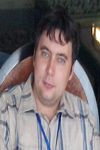
Biography:
Anatoliy Toropov was graduated from Yakutsk State University in 2005. Currently working as scientist at the Institute of Cosmophysical Research and Aeronomy in Ionosphere and Magnetosphere Radio emission laboratory. Currently, he is doing PhD at Institute of Cosmophysical Research and Aeronomy and his research is about electromagnetic fields of thunderstorms in the North-East Asia (Siberia). Research interest includes: atmosphere electric field, thunderstorm, neutrons generating in lightning discharge, bead lightning.
Abstract:
The made at the Institute for Cosmophysical Research and Aeronomy of an instrument system for the synchronous recording of variations in the neutron flux, the atmosphere electric field strength and the electromagnetic radio emission during lightning discharges is reported. Neutrons were detected at Yakutsk (altitude 94m, latitude 61°59.362′ N, longitude 129°41.874′ E) by a low-energy cosmic-ray SNM-15 lead- covered neutron counter and lead-free neutron counter with 10-μs resolution are obtained during short-range lightning events in the vicinity of Yakutsk. In the immediate vicinity of the neutron detectors the electric field-mill was installed to register the electric field and its variations during thunderstorms. The electric field-mill was calibrated in an artificial electric field and has a measurement range of +/-50 kV/m. A linear antenna is mounted in the vicinity of neuron detectors to sense the short-term electric field variations associated with a lightning discharge. It was found that the neutron bursts are observed in the negative lightning discharge only. It was established that all the neutron flux bursts were observed during the thunderstorms with the only type of electric structure of the thundercloud having a compact positive charge at the bottom. We discuss the possibility of generation of neutrons in the lower part (the point of impact into the ground) lightning discharge.
Rainer Sandau
International Academy of Astronautics
Germany
Title: Distributed Space Systems Basics, Status and Prospects
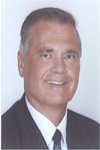
Biography:
Rainer Sandau is retired from the German Aerospace Center (DLR) and acts currently in numerous positions including Director Satellites and Space Applications of the International Academy of Astronautics (IAA) and adjunct Professor at Baylor University, Texas, USA. He has over 30 years of experience in airborne and space borne activities and has been involved in instrumentations of five space missions to Venus, Mars and Earth, and also in numerous concepts for instruments and small satellites for or with different countries and space agencies. He authored or co-authored over 250 publications, holds over 25 patents, and is co-author or -editor of 27 books or conference proceedings.
Abstract:
The advances in various fields of technology are the basis for miniaturized sensors and spacecraft subsystems which allow small satellite missions with performances often comparable or even better than those of former large satellite missions. The actual status of small satellites with associated payloads in terms of spatial, spectral and temporal resolution is provided. This recent trend of miniaturization accompanied with increased or even novel high performance features allows implementing affordable distributed space systems with different basic characteristics. After an introduction to the different concepts of distributed space systems like satellite formations, satellite constellations, spacecraft swarms and rendezvous and docking systems, the paper concentrates on constellations and formations. Their widespread possibilities are presented by means of example missions. Finally, an outlook is given in terms of technology development and application areas.
Dorian Gorgan
Technical University of Cluj-Napoca
Romania
Title: Flexible description of Earth observation data processing
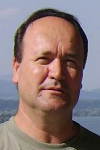
Biography:
Dorian Gorgan is Professor in Computer Science Department of the Technical University of Cluj-Napoca, PhD supervisor in Computers and Information Technology, and coordinator of the Computer Graphics and Interactive System Laboratory (http://users.utcluj.ro/~gorgan). The fields of interest involve parallel and distributed processing over HPC infrastructures such as Grid, Cloud, Multicore, and cluster, development of platforms and applications for spatial data processing and visualization, interdisciplinary research in the domains of Earth Sciences and Earth Observations. He has been involved as scientific coordinator and WP leader in national and international research projects such as BIGEARTH, PECSA, enviroGRIDS, IASON, SEE-GRID-SCI, GiSHEO, mEducator, iTRACE, MedioGrid, COMPLEXHPC, and KEYSTONE. He has been member of scientific and reviewing committees of many ISI journals and international conferences, and gave more than 300 papers and presentations in journals and prestigious conferences in the domains of Computer Science and Earth Observation.
Abstract:
Big Data is a challenge in many fields of research, one important domain being those dealing with Earth Observation (EO) data. The main issues, in this case, are the volume and velocity of data acquired by an increasing number of aerial and space-borne sensors, but as well the complexity of data mining process. Thus, the sheer volume and acquisition rates may threaten to overwhelm many organizational storage capabilities, leading to situations in which data value is overtaken by storage costs, which will, in turn, lead to loss of data. Data can create value only when it is used, and the data protection has to be oriented toward allowing innovation that sometimes depends on creative people, which achieve unexpected valuable results through a flexible and adaptive manner. The users need to describe and experiment themselves different complex algorithms through analytics in order to valorize data. The analytics uses descriptive and predictive models to gain valuable knowledge and information from data analysis. The BigEarth platform offers solutions for increasing the efficiency of the data processing efforts by combining two approaches. The first one experiments the high-performance, cloud-based computing solution in order to shorten the overall execution time. The second approach provides a highly flexible description of the data processing tasks in order to improve the modularity of the design and promote reusability. As a means of specifying the structure of the workflow, the BigEarth platform uses a specially designed description language called WorDeL (Workflow Description Language). This presentation aims to highlight and exemplify some of the main features of the language, and demonstrate their usage in defining Earth Data processing tasks. The WorDeL language is based on the flexible description of processing tasks as workflows, composed of basic processing operators. With this approach, the language offers an intuitive way of representing processing tasks, without requiring programming expertise from its users. It also allows its users to employ and integrate existing functionality into their design, thereby reducing the complexity and development effort of newly defined processing workflows. The WorDeL language supports the transparent adaptive parallelization of the processing tasks over high performance computation architectures, such as cloud based solutions.
Alexander V Bagrov
Institute of Astronomy of the Russian Academy of Science
Russia
Title: Conception of habitable rooms building on the Moon before manned mission there

Biography:
Bagrov Alexander has completed his PhD at the age of 42 years from Odessa University (Russia) and got his Doctor of Science degree from Moscow State University. He is the Leading scientist of Institute of Astronomy of Russian Academy of Sciences and key specialist of Lavochkin Association, a premier space probes manufacturing organization. He has published more than 125 papers in reputed Russian journals and is author of 8 patents. He was awarded to title of "Honor Constructor of Space Technique".
Abstract:
We proposed extremely simple and low-cost conception of slow lunar apartment building using solar energy and lunar material - regolith and basalts. When solar radiation is focused into small patch, temperature inside the patch will be more than 3000K that is enough to melt any lunar material. Having concave film mirror 4-meters in diameter, we can melt about 10 g of stony material every second. If this material is in sands form, it may be poured into light patch to produce monolith construction. Such 3-D printer may be programmed for building any complex construction of walls, floors, studs, stairs, hatches and so on. One 3-D printer with 4-meter mirror can produce about 3,4... 4,0 m3 of monolith construction during one lunar day and 120-tonn building after 1 year work. During lunar night the printer will be at inoperative mode, but it will not be broken. After sunrise it will continue its work. Assuming that thickness of walls and studs would be 50-cm (to protect rooms from space radiation and micrometeorites), the 120-tonn building will have at least 21 m2 of gas proof room. Such light 3-D printer may be delivered to the landing point several years before manned mission, so when astronauts will install proper lids and life support system, they will have enough habitable room for long work.
Tatiana Vozmishcheva
Kalashnikov Izhevsk State Technical University
Russia
Title: From zero to infinity: the limit passage of space curvature in integrable problems of celestial mechanics

Biography:
Tatiana Vozmishcheva is an Associate Professor at Kalashnikov Izhevsk State Technical University and Faculty of Mechanics and Mathematics of Lomonosov Moscow State University. Tatiana Vozmishcheva has completed her PhD at Moscow Institute of Electronics and Mathematics (Technical University) in 1992 and postdoctoral studies at Department of Differential Geometry and Applications. She has published 49 papers and monographs in reputed journals and Publishing Houses.
Abstract:
What can we say about the three-dimensional space in which we are living? We draw the conclusions that it has the constant zero curvature on the base of experience and studying only surrounding space that is actually incorrect. Probably, we as the Clifford worm ascribe changes of curvature to some physical actions or to changes in our organism. Small parts of space are really similar to small hills on a surface which is flat on the average, and namely there the standard laws of geometry are not true. The property of a curvedness or deformation continuously passes from one part of space to another like a wave. Variation of space curvature just is what really occurs in the phenomenon which we call the matter motion. The connection between integrable problems of celestial mechanics, the Kepler problem and the two-center problem, in the Euclid space, in the Lobachevsky space and on a sphere is investigated. The limit passage in the two-center problem in the Lobachevsky space and on a sphere is carried out as ( is a curvature of the corresponding space). The potentials and metrics in spaces under study are written in gnomonic coordinates. It is shown that integrable problem of celestial mechanics: the Kepler problem and the two-center problem, pass one to another in spaces of constant curvature under changing two parameters: the space curvature and the distance between centers. It seems natural that integrable problems of celestial mechanics should pass each other at change of space curvature.
Douglas Santos Rodrigues Ferreira
Federal Institute of Rio de Janeiro
Brazil
Title: On the agreement between small-world-like OFC model and real earthquakes

Biography:
Douglas Santos Rodrigues Ferreira has completed his degree and Master's degree in Physics from Fluminense Federal University (Brazil) and his PhD in Geophysics from National Observatory (Brazil) with a sandwich period in Florida Institute of Technology (USA). He works in the Instrumentation Laboratory and Applied Scientific Computing at Federal Institute of Rio de Janeiro and has experience in Physics and Geophysics focusing on Applied Geophysics, Statistical Physics, Complex Networks and Self-organized Critical Systems.
Abstract:
Despite all the existing knowledge about the production of seismic waves through slips on faults, much remains to be discovered regarding the dynamics responsible for these slips. Aiming to contribute to the understanding of earthquake dynamics, in this paper we implemented simulations of the model developed by Olami, Feder and Christensen (OFC model), which incorporate characteristics of self-organized criticality (SOC) and has played an important role in the phenomenological study of earthquakes, because it displays a phenomenology similar to the one found in actual earthquakes. We applied the OFC model for two different topologies: Regular and “small-World”, where in the latter the links are randomly rewired with probability p. In both topologies, we have studied the distribution of time intervals between consecutive earthquakes and the border effects present in each one. In addition, we also have characterized the influence that the probability p produces in certain characteristics of the lattice and in the intensity of border effects. Furthermore, in order to contribute the understanding of long-distance relations between seismic activities, we have built complex networks of successive epicenters from synthetic catalogs produced with the OFC model, using both regular and small-World topologies. In our results, distributions arise belonging to a family of non-traditional distributions functions, which agrees with previous studies using data from actual earthquakes. Our results reinforce the idea that the Earth is in a critical self-organized state and furthermore point towards temporal and spatial correlations between earthquakes in different places.
Aleksey Malinka
National Academy of Sciences of Belarus
Belarus
Title: Retrieval of the sea ice optical properties from satellite optical measurements
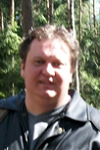
Biography:
Aleksey Malinka has graduated from the Belarusian State University, the Department of Physics, in 1997. In 2005 he has completed his PhD at Physical and Mathematical Sciences, specialization – Optics. Up to now he works in the Institute of Physics of the National Academy of Sciences of Belarus as a Leading Researcher. He has published more than 20 papers in peer-reviewed journals and made more than 30 presentations at the international conferences. His studies are aimed at the better understanding of light scattering phenomena in various natural environments. The scope of his interests extends from the basic concepts of the light scattering theory to processing the data of lidar sounding and satellite remote sensing.
Abstract:
Satellite remote sensing is an important tool for monitoring the sea ice state, particularly in the difficult-to-access Polar Regions. The snow grain size, the soot contaminants concentration, the melt pond fraction (during the summer melt), and the surface albedo are the key characteristics for various problems regarding the climate changes, monitoring the ice melt process, particularly regarding the drastic changes in the Arctic environment, observed in the recent years. The common approach to retrieve the sea ice characteristics uses the a priori reflection spectra of the sea ice surface components: snow, white ice, blue ice, melt pond, and so on. Here another technique is presented based on models of the optical properties of sea ice. Algorithm MPD (Melt Pond Detector) considers the summer ice as consisting of white ice (high reflective) and melt ponds. The MPD input is the MERIS data. The algorithm retrieves the surface characteristics in an iterative procedure with the Newton-Raphson method. It uses the simple optical model of ice, take into account the bidirectional reflection, and include the atmospheric correction. It was verified with the in situ measurements. The output is maps of the melt pond fraction and the pixel spectral albedo. The produced maps allow monitoring the long-time global changes of the Arctic ice state. These retrievals provide the historical data on the process of Arctic ice melting, which is so important for understanding the climate changes in the Arctic. It is planned to implement it for processing the data of the OLCI on Sentinel-3. Parts of these studies have been supported by the 6th and 7th Framework Programmes of the EU (projects DAMOCLES and SIDARUS).
Foo Chee Hung
Construction Research Institute of Malaysia
Malaysia
Title: Human-nature interaction – How human wellbeing is affected by the degree of naturalness
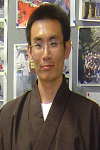
Biography:
Foo Chee Hung is a researcher from the Construction Research Institute of Malaysia (CREAM) – a research arm under the Construction Industry Development Board Malaysia (CIDB). He obtained both his first (Environmental Engineering) and master (SHE Engineering) degree in The University of Malaya. He then further pursuit his PhD (Urban Engineering) in The University of Tokyo. His research interest is in sustainability, affordable housing, green building, building quality assessment, Industrialized Building System (IBS), and urban ecosystem. He is a member of the Institution of Engineers Malaysia (IEM), GreenRE manager, and Qlassic assessor.
Abstract:
Past researches have reported positive correlation between environmental preferences and perceived naturalness, and the natural environments have been shown to have significant benefits for human wellbeing. Even a positive relationship is observed between natural settings and the likelihood of people undertaking outdoor activities (or recreation). This paper presents results of a study conducted in Klang Valley region, with the general goal to contribute to the empirical rationale for linking forest naturalness with human wellbeing. By applying a combination of research techniques and analysis, the present study successfully gives an observational support to the potential relation that links together naturalness, experiential connection to nature, and human wellbeing; where naturalness is an important dimension of environmental experience that may benefit to the human wellbeing (in terms of physical, mental, and social) through influencing the human-nature interaction. A more ‘natural’ forest tends to serve the public in a more diverse way than the less ‘natural’ forest. A more ‘human-controlled’ forest, on the other hand, tends to serve the public in a more specific way due to the instalment of certain facility which aims to facilitate the forest users for conducting certain activity. This paper is of useful in providing an understanding on how such relationship formed within a rapidly urbanized city, where urban natures are relatively more susceptible to the physical and economic changes brought by the ever growing development pressure. Apart from that, a deeper insight of the different meanings of urban natures – in the context of the developing country – is provided.

Biography:
Hamdy A. M. Aboulela has completed his PhD at the age of 37 years from Faculty of Science, Hamburg University, Germany, 2003. He is associate professor of Marine geology and applied geophysics in department of Marine Science, Faculty of Science, Suez Canal University 41522, Ismailia, Egypt. He has published more than 15 papers in reputed journals and has been serving as an editorial board member of repute.
Abstract:
Manipulation, combination, overlay, integration and reattribution GIS and remote sensing functions have been used to explore the possible new occurrences of geothermal resources in South Sinai. Moreover, surface observations and lineament analysis of satellite images are used to delineate the active geothermal areas. The distribution of recent earthquake epicentres over South Sinai shows three main active trends (N6oE, N40o-75oE and N50o-60oW) conformable with the long fault extensions extracted from ETM+7 and ASTER GDEM satellite images and comprise the well-known hot springs in South Sinai. The N6oE trend intersects both of N50o-60oW or N40o-75oE, the temperature of spring waters is remarkably increases. This feature attributed to the deep penetration of groundwater along the N6oE fault trend (Gulf of Aqaba trend). The seismicity patterns of well-known and newly predicted geothermal sites show that, the majority of earthquakes have focal depths range between 3 and 33 km and have micro to moderates magnitude (0.5 ≥ Mb ≤ 4.5). In addition, the maximum focal depth of events reached up to 50 km at Hammam Faroun area revealing the deep-seated thermal source. The main chemical type of the known thermal water of south Sinai is Cl-Na, indicating a long flow pathway of this water. The high calcium contents of thermal water of South Sinai are accompanied with remarkably low sulphates. The hydrochemistry of the newly predicted thermal sites exhibit similar pattern of the known thermal waters. Such observations are used as indicators to locate six predicted new occurrences of geothermal fields in South Sinai.
Abd-Alla GAD
National Authority of Remote Sensing and Space Sciences
Egypt
Title: Developing a digital land resources database of Egyptian Nile Valley, based on integrated GIS and satellite data

Biography:
Gad Graduated at the Faculty of Agriculture, Al-Azhar University, Cairo, Egypt, B.Sc., specialized in Soil Sciences, 1976 with degree of "Very good with honor degree". He continued studies at the Faculty of Sciences, State University of Ghent, Belgium, and obtained PhD in remote sensing applications, with greatest distinction degree in 1988. He is an expert in soil survey, land evaluation, land degradation and desertification. He was awarded the “State prize in advanced technical Studies, Agricultural Sciences”, Egypt, 2001; “Shield of Excellence”, Euro-Arab Organization of Water, Environment and Desert studies (2014); “Shield the University of Jordan” (2016). He coordinated the EU-FP7 funded project “Characterization and Sustainable Use of Egyptian Degraded Soils (SUDSOE), Jan 2012.
Abstract:
The National development plans aim to sustain and raise productivity of arable lands. Development of a digital land resources data base is important for realizing best land use. The current article focuses on the Nile Valley, which gifts the Egypt land, among the hyper arid desert area. Information and maps, including analogue data, were digitized, geo-referenced and imported to a GIS model. Networks of irrigation, drainage, roads, railways and utilities, were included. SRTM, recent ETM+ and SPOT satellite images were utilized to validate thematic maps and develop DEM. Intensive field investigation, equipped by a navigation GPS, was performed, to collect ground control points and representative soil samples. It was found that 2.63% of the mapped soils is exhibited by soil order “Arididsols”, dominated by “Petrogypsids” great group at Northwestern desert fringes of Nile Valley. The “Entisols” soil order dominates the studied soils (97.37%), where”Torrifluvents” great group is pronounced (52.3%). The elevation ranges from 0 to 40 meters ASL. It was found that 15.5% of Nile Valley are classified as highly capable, corresponding with “Vertic Torrifluvents” soils sub great group. The low capable soils, corresponding to sub-great groups “Typic Petrogypsids”, “Typic Haplosalids” and “Typic Petrogypsids”, represent 1.7 of the Nile Valley. The most striking findings noticed were the urban encroachment on the account of most fertile soils. It could be concluding that achieving such detailed digital land resources database is a great step towards the implementation of sustainable development and management programs.
Anatoliy Kulik
National Aerospace University "KhAI"
Ukraine
Title: Control of operability of redundant electrical flywheel actuator units under the destabilizing influences

Biography:
Anatoliy Kulik graduated of the Kharkov Aviation Institute as a specialty Electromechanical Engineer in 1971 and he has worked there since then. He defended Candidate’s thesis in 1977 and Doctor's thesis in 1992. He worked as the Dean of the Flying Vehicles Control Systems faculty from 1998 to 2015. He is a Head of the Flying Vehicles Control Systems department since 1998. Three Doctoral and 15 Candidate theses have been prepared and defended under his leadership. Scientific results are reflected in 435 papers. He is a member of the editorial board of some specialized scientific magazines, Laureate of the Ukraine State Prize in Science and Techniques, and Member of International Academy of Navigation and Motion Control.
Abstract:
During the spaceflight, satellites are influenced by external perturbation actions of gravitational, magnetic, aerodynamic, electric, solar, and other forces and moments. To fend off these disturbances in order to maintain required orientation of the satellite, actuators are used, which create reactive moments for the conservation of angular momentum of the satellite. Electric-flywheels implemented as motor-flywheels are effectively used as actuators for satellites. These devices are combined to actuator units, which creates control vectors of reactive moments. The structure of three such actuators placed along the axes of the orthogonal coordinate system, allows fending off external disturbances. Units with redundant structure of flywheels actuators also allow parrying complex internal disturbances called as rejection. External and internal disturbances represent a lot of destabilizing influences. These actions violate the operation of electric flywheel actuator units. The units of actuators with redundant structure provide the ability to fend off a destabilizing effect. This problem is actually both in theory and in practice of satellite control. A new diagnosis-based control principle is used to solve this problem. By using that approach for operability control allows to provide a diagnosability and recoverability relative to a plurality of potential destabilizing effects of actuator unit during its designing. The new diagnostic models, which assign direct and indirect signs of destabilizing influences, were developed. The criteria of structural and signal diagnosability for these models were formed. The algorithms for diagnosing of a flywheels actuator unit with pyramidal structure were developed. The models and algorithms of operability recovery of such actuator units were formed. The breadboard model of electromechanical actuators with pyramidal structure in gimbals was made. The series of experimental research were carried, which confirmed the theoretical and practical applicability of proposed control approach of redundant electrical flywheels actuator unit operability.
Tarek Nada
National Authority for Remote Sensing and Space Sciences
Egypt
Title: Performance evaluation of Liquefied-Gas thruster

Biography:
Tarek Nada has completed his MSc and PhD in Aerospace Engineering from Cairo University and postdoctoral studies from Stuttgart University, Institute of Space Systems (Institut Für Raumfahrtsysteme, IRS). He is associate professor and head of space mission analysis department at National Authority for Remote Sensing and Space Sciences, Cairo, Egypt. He has published more than 15 papers in reputed journals and International conferences, and has been serving as reviewer for many International journals in Aerospace Engineering.
Abstract:
The performance of liquefied-gas thruster is evaluated for different design alternatives. Three heating concepts are assessed, namely; accumulator heating pipe, accumulator with inner copper discs and low-power resistojet. The performances of the three configurations are compared in terms of thrust, specific impulse, thrust-to-power ratio and impulse bit. This evaluation is essential in selecting the proper propulsion system for certain space mission. One-dimensional gas dynamics model is developed to predict the performance of the thruster for each concept employing butane as the propellant. Comparisons are made and conclusions for advantages and disadvantages of each design alternative are discussed. Moreover, a parametric study is conducted for each case to investigate the effects of nozzle geometry, initial tank pressure and input power on the performance of the thruster.
K Dergachov
National Aerospace University "KhAI"
Ukraine
Title: Tendencies of intellectualization in aerospace engineering
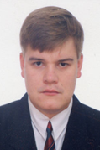
Biography:
K Dergachov graduated from the Kharkov Military University in Mathematics in 1995. He defended Candidate's thesis (PHD) in 2000. He worked as a teacher and researcher at the Kharkov Military University from 1996 to 2007. He works as Associate Professor in Flying Vehicles Control Systems department since 2007. His scientific results are reflected in 180 papers.
Abstract:
Progress of vehicles development is accompanied by number of negative impacts. Among them are an unacceptable level of human-being losses, the growth of energy consumption of non-renewable sources, the negative impact on the environment, passenger and freight flows delay, etc. So, there are a number of harmful effects on the environment along with the need to improve transport means. Obvious contradiction between these two problems gives rise to seeking of new ways of solving relevant scientific and technical problem providing for the vehicle safety. Currently, the solution of this problem can be found in intellectual vehicles implementation. Among the transport systems, aerospace systems occupy a significant place. Aerospace systems use and integrate an aircrafts or a space crafts (flight vehicles, FV) for the purpose of things and passengers transportation. Today, it is particularly important to improve exploitation efficiency of such systems. In aerospace systems, flight vehicle are used to perform functions of transportation which can bring us to new goals of FV functioning by taking into account various factors of environment and FV motion characteristics. Aircraft control is carried out by the use of control systems. In the past, they were building the FV control system using a prior knowledge about the environment. Intellectual support structure can be presented as the three types of automatic operations: Missions being performed without informing the person; missions being performed with the help of informing the person; recommended tasks which the system should carry out after information confirm. Aerospace technology intellectualization will result in: Effective solving navigation tasks without dispatchers and navigators assistance; e.g., the concept of 4-D navigation and free-plan flights (out of routes flights); carrying out profound diagnostics and workability recovery without ground services participation, during both flight and preflight; implementation of a number of other complex facilities requiring the intelligent support.
Abdel-Aziz Belal
National Authority for Remote Sensing and Space Sciences (NARSS)
Egypt
Title: Detecting urban growth using remote sensing and GIS techniques in Al gharbiya governorate, Egypt
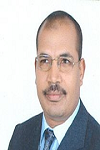
Biography:
Abdel-Aziz Belal is an Associate Professor at National Authority for Remote Sensing and Space Sciences (NARSS), Egypt. He has completed his Ph.D. in 2006 from Freiburg University (Germany). He has published more than 36 in reputed journals His main fields of interest on remote sensing and GIS techniques, Environmental Science, Soil Science, Climate Change.
Abstract:
Tanta and Quttour are the important districts in Al Gharbiya governorate, Middle of Nile Delta, Egypt. Urban sprawl is one of the main problems that reduce the limited highly fertile land in the Nile Delta of Egypt. Computational urban growth and computer hardware had made possible unprecedented increase in the availability and provide information inputs to planners. Remote sensing technology has shown its great capabilities to solve many earth resources issues. The aim of this study is to produce land use and cover map for the studied area at varied periods to monitor possible changes that may occurred, particularly in the urban areas and agriculture and subsequently predict likely changes. Two land sat images, Multispectral Scanner (MSS) in the 1972 and Enhanced Thematic Mapped (ETM) in the 2005 were used to assess the changes of agricultural lands, urban encroachment and water areas during this period with integration by GIS. The agricultural areas in Tanta and Quttour decreased by 7.17% and 5.84%, respectively from the year 1972 to 2005, while the urban areas increased by 7.17–5.84%, respectively. This urban expansion causes loss of productive agricultural lands. Finding data is useful for decision maker to investigate and monitoring illegal use of agricultural land in Nile Valley and Delta.

Biography:
Heba Abd El Hamid Abd Allah is an Architecture Engineering working as a teaching assistant at architecture Department, Faculty of Engineering, Aswan University, Egypt. Recently, she has registered as a master student at Aswan University in the field of urban planning. (Remote sensing, Photogrammetry, GIS, GPS and Plane surveying). In 2014, she has completed a comprehensive undergraduate degree in Architecture Engineering at Aswan University, Egypt. She is having a strong academic record and my overall bachelor grade was very good with honor rank with a percentage of 77.82%. She has ranked among the first in Architecture Department. She is interested in attending scientific conferences, seminars, workshops and associated with other different activities. She attended a workshop with DAAD about urban climate in El Gouna & anther one in Aswan. She spends most of my time in several activities related to her research.
Abstract:
As ecotourism becomes more and more popular, developing countries are now embracing it and including it in their economic development and conservation strategies. Egypt as one of these countries enjoys a rich cultural and environmental heritage and offers an exceptional environment for ecotourism development. Despite of this heritage of people, accents, history, flora and fauna all offer irresistible lures, Egypt has the Lowest fortune of ecotourism income. This was due to Lack knowledge of spatial success factors for ecotourism location Especial in Upper Egypt. So, the purpose of this study is to identify success factors that affect selecting ecotourism site prior to undertaking the development of an ecotourism operation, understanding these factors will mitigate the risk of failure of selecting process. To achieve these purpose, research divided into three main parts; the first part focused on the analysis of theoretical and conceptual knowledge in available literature especially on Egypt; and the second part deals with Detailed study of study area to figure out which spatial factors fits with it; and the third part Specializes questionnaire with specialists and planners to arrange the spatial success factors in terms of importance and determine the priority of each standard on the other
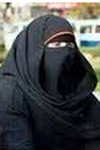
Biography:
Asmaa H. Ahmed is an Architecture Engineering working as a teaching assistant at architecture Department, Faculty of Engineering, Aswan University. Recently, she registered as a master student at Aswan University in the field of Surveying Engineering (Remote sensing, Photogrammetry, GIS, GPS, Plane Surveying and Advanced Geodesy). In 2011, she has completed a comprehensive undergraduate degree in Architecture Engineering at South Valley University, Egypt. She has a strong academic record and overall bachelor grade was very good with honor rank with a percentage of 81.4%. She has ranked among the first in Architecture Department. She is interested in attending scientific conferences, seminars and associated with other different activities. She spends most of my time in several activities related to my research.
Abstract:
Site selection for sitting of urban facilities is one of the crucial policy-related decisions taken by urban planners and policy makers. The combination of GIS with fuzzy set theory and deterministic models is known as GIS Fuzzy Modeling (GISFM). GISFM was adopted for support sustainable land use planning. This paper considers the specific problem of creating a well-sustainable distributed of hospitals. We develop a Multi-Criteria Decision Analysis process that combines Geographical Information System (GIS) analysis with the Fuzzy Analytical Hierarchy Process (FAHP), and use this process to determine the optimum site for a new hospital in Aswan City. Based on actual conditions of the study area, we built a hierarchy model for selecting optimum health care services sites in Aswan city, Egypt. We considered two main factors, and 5 sub-factors. An application adopting the AHP idea was developed to calculate weights of the criteria of the site. The GIS was used to overlay and generate criteria maps and suitability map. The (GIS) was used to manipulate and present spatial data. All maps are graded from 1 (lowest suitability) to 5 (highest suitability) using spatial information technologies. The candidate sites were determined by aggregation based on the criteria weights. The candidate sites are divided by ‘best’, ‘good’ and ‘unsuitable’ landfill areas. Best health care site represent optimal sites; good health care site can be used as back-up candidate sites. Our work offers a siting methodology and provides essential support for decision-makers in the assessment of health care site management problems in Aswan City and other rapidly developing cities in developing countries.
Rajkumar Hajra
University of Orléans
France
Title: High-Intensity Long-Duration continuous AE activity (HILDCAA) events and “Killer Electrons†in Earth’s outer radiation belt

Biography:
Rajkumar Hajra has completed his PhD at the age of 28 years from University of Calcutta, India, and postdoctoral studies from Instituto Nacional de Pesquisas Espaciais (INPE), Brazil. He is currently working as a researcher in CNRS, Orleans, France. His research interest includes various ionospheric and magnetospheric topics related to ionospheric total electron content, scintillation, solar wind high-speed stream effects etc. Presently he is working in an ESA funded project related to the Rosetta mission to study the ionized environment of a comet called 67P/Churyumov-Gerasimenko (67P/C-G). He has published more than 20 papers in reputed journals.
Abstract:
High-intensity long-duration continuous AE activity (HILDCAA) events have been shown to be associated mostly with high-speed solar wind streams (HSSs) [Hajra et al., JGR, 118, 5626, 2013]. These geoeffective events, by definition [Tsurutani and Gonzalez, PSS, 35, 405, 1987], have peak AE intensities > 1,000 nT and continue for more than 2 days when AE values do not drop below 200 nT for more than 2 h at a time. The events are caused by the southward component of interplanetary Alfvén waves embedded within the HSSs. Recent studies show that HILDCAA events are associated with generation of relativistic (MeV) electron acceleration in the Earth’s outer radiation belt [e.g., Hajra et al., GRL, 41, 1876, 2014]. The relativistic electrons are known as “killer electrons” for their hazardous effects to orbiting spacecraft. In the present talk, we will present a detailed study on the geomagnetic characteristics and interplanetary causes of the HILDCAA events as well as the solar cycle and seasonal dependences of the events. It will be shown that the ground-based AE observations during HILDCAAs may potentially be used to predict by > 1 day advance the acceleration of radiation belt relativistic electrons at geosynchronous orbit. Relativistic electron acceleration and decay timescales will be provided for wave-particle investigators to attempt to match their models to empirically derived values.
Jindong Xu
Yantai University School of Computer and Control Engineering
China
Title: Multi-scale sparse decomposition of image and its application in Remote Sensing image fusion

Biography:
Jindong Xu has completed his PhD at the age of 34 years from Beijing Normal University and postdoctoral studies from Institute of Automation Chinese Academy of Sciences. He is the assistant professor of Yantai University, a famous university of China. He has published more than 10 papers in reputed journals.
Abstract:
Morphological component analysis (MCA) is a successful example of a sparse image decomposition algorithm. Building on MCA, a multi-scale sparse image decomposition method, called m-MCA, is presented in this paper. M-MCA combines Curvelet Transform bases and Local Discrete Cosine Transform bases to form the decomposition dictionary and controls the entries of the dictionary to decompose the image into texture component and cartoon component. From the aspect of the amount of information, a remote sensing image (RSI) fusion method based on multi-scale sparse decomposition is proposed. Via sparse decomposition, the effective scale texture component of high resolution RSI and cartoon component of multi-spectral RSI are selected to be fused together. Compared to the classical fusion method, the proposed fusion method gets higher spatial resolution and lower spectral distortion with a little computation load. Compared to sparse reconstruction fusion method, it achieves a higher algorithm speed and a better fusion result.
Zhuokun Pan
Zhejiang University
China
Title: An IDL-based program for constructing time-series remote sensing data: towards high spatiotemporal applications

Biography:
Pan Zhuokun is currently a doctoral student in Zhejiang University. His research interests are mainly focused on remote sensing and geoinformation sciences in agriculture. Specifically, he has great interest in integrating remote sensing data and physical model to perform regional application, for the evaluation of agriculture suitability, risk, and yield improvement.
Abstract:
Research in time-series of remote sensing data is receiving increasing attentions. Research using relatively high spatiotemporal resolution satellite imagery was unprecedented. For the purpose of utilizing such high repeat cycle with relatively high spatial resolution satellite materials, in this paper, an IDL-based program was developed. The China’s HJ-1 A/B satellite data were employed for time-series construction. To construct a complete spatial time-series data with IDL, processing methodologies included Savitzky-Golay filter for smoothing, and linear-interpolation for daily NDVI imagery interpolation. Methodologies employed in this program are quite capable in maintaining essential shape of NDVI trajectory temporally. By analogy to commonly used multi-temporal remote sensing data (e.g., vegetation-index product derived from MODIS, AVHRR), application cases in utilizing HJ-1 A/B NDVI time-series were presented. It was also tested applicable for most multi-temporal remote sensing data for time-series construction. With the availability of relatively high spatiotemporal satellite data, the authors are having a positive expectation at utilizing such data to advance the time-series analysis in remote sensing community.
Amin Beiranvand Pour
Universiti Teknologi Malaysia
Malaysia
Title: PALSAR-2 remote sensing data for geo-hazard mapping in Kelantan river basin, Malaysia
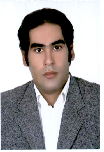
Biography:
Amin Beiranvand Pour has completed his PhD from University Technology Malaysia. He is the Senior Lecturer in University Technology Malaysia. He has published more than 25 papers in Geology and Remote Sensing journals.
Abstract:
Natural hazards of geological origin are one of major problems during heavy monsoons rainfall in Kelantan state, peninsular Malaysia. Several landslides happened in this region were obviously connected to geological and topographical features. Satellite synthetic aperture radar (SAR) data are particularly applicable for detection of geological structural and topographical features in tropical conditions. In this study, Phased Array type L-band Synthetic Aperture Radar (PALSAR-2) data were used to identify high potential risk and susceptible zones for landslide in the Kelantan river basin. Adaptive Local Sigma filter was selected and applied to accomplish speckle reduction and preserving both edges and features in PALSAR-2 fine mode observation images. Different polarization images were integrated to enhance geological structures. Additionally, directional filters were applied to the PALSAR-2 Local Sigma resultant image for edge enhancement and detailed identification of linear features. Several faults, drainage patterns and lithological contact layers were identified at regional scale. In order to assess the results, fieldwork and GPS survey were conducted in the landsliding zones in the Kelantan river basin. Results demonstrate the most of the landslides were associated with N-S, NNW-SSE and NE-SW trending faults, angulate drainage pattern and metamorphic and Quaternary units. Consequently, landslide risk map were produced for Kelantan river basin using recent PALSAR-2 data, which could be broadly applicable for landslide hazard assessment and delineation of high potential risk and susceptible areas. Landslide mitigation programmes could be conducted in the landslide recurrence regions for reducing catastrophes leading to economic losses and death.
Lucie Novakova
Academy of Sciences
of the Czech Republic
Czech Republic
Title: Relation of fault orientation data in mezzo- and macro-scale as provided by field survey and ASTER GDEM lineament analysis in context of paleostress analysis

Biography:
Lucie Novakova finished her Ph.D. in 2013 at Faculty of Sciences, Charles University, Prague. She has been working at the Institute of Rock Structure and Mechanics, Academy of Sciences of the Czech Republic since 2005. Her work is dealing with brittle tectonics from macro to micro scale, reconstruction of tectonic history of complex fault zones, and intraplate seismicity within the Bohemian Massif. She has published more than 15 papers in international journals and has been Editor in Chief and Editorial Board Member of reputed journals.
Abstract:
Brittle tectonics paleostress analysis utilizes information recorded on faults mostly in mezzo-scale to determine stress regime in macro-scale. Data coverage as well as relationship between mezzo- and macro-scale faults in a studied area (typically tens to hundreds square kilometres) are essential to obtain reliable results. In addition analysis of fault’s orientation data in different scales might not only unearth possible segmentation of a studied area but also help to delimitate it. Several methods can be deployed to learn orientation data of macro-faults. Geological or tectonic maps and remote sensing data are the most obvious sources. Geology and tectonics in particular provide a framework in which natural terrain tends to be formed. While maps usually describe faults from certain dimension as supposed by the geologist, digital elevation model provides subjectively unbiased dataset with macro-faults demonstrated as lineaments. Geological map and lineament orientation analysis of the area provides necessary structural information for following brittle tectonics features field survey to cover the area evenly. In our paleostress project we applied image tracing techniques on the ASTER GDEM to determine main orientation of terrain lineaments. Subsequently, according to orientation of the terrain lineaments we defined five different areas. As compared with the geology map, high degree of correspondence was found. In addition, also field mapped orientation of the mezzo faults has been found rather consistent suggesting the mapped mezzo-faults are related to the macro-faults as expected. The finding also suggests local stress regimes recorded over the studied area represent stress regimes in the macro-scale.

Biography:
Jium-Ming Lin was born in Taiwan 1952 and graduated from the Department of Electronic Engineering, National Chiao-Tung University at Taiwan in 1974. He achieved the Master and Ph. D Degrees from the same school of Institute of Electronics in 1976 and 1985, respectively. He was an adjunct professor and full professor since 1992 and 1996 at the Dept. of Mechanical Engineering, Chung-Hua University, Taiwan. Now he is at Dept. of Electronic Engineering and majors in the fields of RFID, accelerometer, rate gyro; multi-variable, optimal, stochastic and fuzzy-neural control; avionics, and MEMS. He also has several patents in the related areas.
Abstract:
This research applied both the traditional, Ziegler-Nichols-based and Ziegler-Nichols-based fuzzy control methods for the design of mobile satellite antenna tracking system. Firstly, the antenna tracking and the stabilization loops were roughly designed according to the traditional bandwidth and phase margin requirements. However, the tracking performances would be degraded if the tacking loop gain is reduced due to parameter variations. On the other hand, both Ziegler-Nichols-based PID-type and Ziegler-Nichols-based fuzzy controllers were also applied in the tracking loop to improve the performance. But only the performances obtained by the fuzzy controllers were better for both the antenna tracking loop with low and high gains, and to reduce the effect of tracking loop gain parameter variations. In addition, the backlash hysteresis effect of gimbals are also taken into consideration for both cases; one can see that the systems obtained by using Ziegler-Nichols-based P, PI, PD and PID type fuzzy controllers are more robust to parameter variations even with the hysteresis effect. Key-Words: - Mobile Satellite Antenna, PD-type Fuzzy Controller, PI Compensator, Stabilization
Salwa Belaqziz
Chouaïb Doukkali University
Morocco
Title: Remote sensing-based irrigation index to improve water efficiency in agriculture
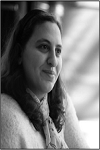
Biography:
Salwa Belaqziz is an Assistant Professor of Computer Science at the Chouaïb Doukkali University (El Jadida, Morocco). She received her PhD degree in Computer Science in 2014 from the Cadi Ayyad University (Marrakech, Morocco). After graduating, she spent a year at the French National Institute for Agricultural Research in Toulouse as a postdoctoral researcher. Her main research interests are: software engineering, multi-agent systems, water resources management and remote sensing.
Abstract:
With the increasing pressure on water resources accentuated by climate change, irrigation scheduling has become an important tool that significantly influences growth, development and production of crops and which allow avoiding both excessive irrigation and crop water stress. For this purpose, using remote sensing-based vegetation indices derived from optical data, can be considered as a suitable tool for monitoring crop phenology, water stress and therefore, the crop water requirement. In this context, we present and evaluate a new irrigation priority index (the IPI) based on remote sensing, which measures the irrigation priority of a plot in parts concerned by the irrigation round. This normalized indicator takes into account the water stress coefï¬cient and the time of irrigation with regard to the duration of an irrigation round. The IPI ranges between -1 and 1 and decreases with irrigation priority. The IPI was used to evaluate the actual irrigation scheduling in an irrigated perimeter of 2800 ha of Tensift Al Haouz plain close to Marrakech in Morocco during the 2002–2003 winter wheat season. The obtained results showed that about 32% of the plots receive late irrigation, when the stress was maximum. The sensitivity of grain yield to the IPI values was also evaluated on a data set of wheat yields acquired on the 2008–2009 season. The spatial yield was simply calculated using a linear relationship between wheat yields and the spatial accumulated NDVI (Normalized Difference Vegetation Index). The result showed a clear relationship between grain yield and IPI.
Oleksiy Dudnik
Institute of Radio Astronomy
Ukraine
Title: Three-belt structure of electron fluxes in the Earth’s magnetosphere as seen by the STEP-F instrument during deep minimum of solar activity

Biography:
Oleksiy Dudnik received PhD and Doctor of Science degrees in Physics and Mathematics from the Kharkiv State University, Ukraine, in 1990, and in 2015, respectively. He was Head of the Space Research Sector at Kharkiv University; Chief designer of the STEP-F satellite instrument flown aboard CORONAS-Photon satellite. He was PI of international and domestic research projects aimed for developing of compact satellite devices on measurements of energetic charge particles. His research interests are: dynamics of magnetospheric particles and radiation belts; HF sporadic radio emission of the near Earth space, space weather. He published more than 50 papers in journals on listed areas.
Abstract:
The analysis of sub relativistic02 electron fluxes at height ~550 km was performed on the base of experimental data obtained in 2009 from the STEP-F instrument installed on board the LEO spacecraft CORONAS Photon. Throughout processed data from selected months of 2009 three belts’ structure of electron fluxes was recorded in the Earth’s magnetosphere due to large geometric factor (~20 cm2*sr) and high sensitivity of the STEP-F instrument. The slot between Van Allen inner and outer radiation belts had not being filled in by particles as it frequently was recorded during strong geomagnetic storms. Instead of it additional steady belt was recorder at L shell ~1.6 distantly not far from the well-known Van Allen inner belt (at L~2.3 for the energy range ∆Ee=0.18 0.51 MeV). The intensity of particles in both: additional and inner belts depended on the level of geomagnetic activity though the latter one in average was very low in 2009, the year of minimum of 11-year’s cycle of solar activity. The Van Allen and new recorded belt at L~1.6 had been registered on the geographic longitudes, which are not coincided with those ones of South Atlantic Anomaly zone location. The energy spectra of electrons populating both innermost belts differ strongly: a harder spectrum was found in the Van Allen inner belt in comparison with the newly detected third one. For the third “additional†radiation belt electrons with energies Ee≥0.4 MeV had not been registered.
Manviienko Serhii
Privat Joint Stock Company “Research and Production Complex “Kursâ€
Ukraine
Title: Results of experimental working off relativistic gravimeter
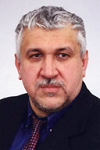
Biography:
Manviienko Serhii has completed his PhD at the age of 30 years from SDO “Yuzhnoye” in the year 2012. He is the director of business development “RPC “Kurs” in 2015.He has published more than 32 papers in reputed journals and one of the first has suggested to use relativistic effect of gravitational displacement of frequency of electromagnetic radiation at creation of new type relativistic gravimeter.
Abstract:
According to the contract on cooperation and the organization of mutual relations between SO «Ukrmetrteststandart» and “RPC “Kurs” in December, 2015 tests of one of types relativistic gravimeter - differential radiophysical gravimeter have been conducted. Technical realisation of such type gravimeter is having the name a program-technical complex (PTK) «Gravika». Tests have been spent in SO «Ukrmetrteststandart» Acknowledgement of technical characteristics PTK «Gravika». On the basis of navigating receivers of new generation and the modernized scheme of measurement was the test purpose; Acknowledgement of technical characteristics PTK «Gravika». Is receptions of a difference of frequencies between signals of 10 MHz of two GPS receivers at the expense of their rating on distance of 2,85 m on height. Results of measurements received by means of CNT-90 are duplicated by internal comparators BC21 and ВС23 hydrogen standards of frequency VCH-1005. Sessions of measurements with working off of the optimum scheme of connections have been for this purpose spent from November, 15th, till December, 21st, 2015. The size of change of a difference of frequencies between a signal of 10 MHz of two GPS the-receivers carried on height on distance of 2,85 m., makes 9.8Ñ…10-15
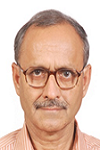
Biography:
R. K. Sharma completed his PhD in Space Dynamics at the age of 28 years from University of Delhi, India. He is professor of Aerospace Engineering at Karunya University, Coimbatore, India since August 2011. Prior to that, he worked as scientist in Indian Space Research Organization for 38 years. He has published 57 papers in reputed journals including 4 in Proceedings of Royal Society of London. He has published 25 papers in the proceedings of reputed conferences. He has reviewed a number of manuscripts for different Journals. He has examined about 40 theses for the degree of Ph.D in Space Dynamics and Celestial Mechanics.
Abstract:
Precise orbit computation of artificial Earth Satellite is a basic necessity for accurate mission planning, satellite geodesy, re-entry and orbital lifetime estimates. Though the numerical integration methods can generate more accurate ephemeris of a satellite with respect to a complex force model, the analytical solutions represent a manifold of solutions for a large domain of initial conditions and parameters and find indispensable application to mission planning and qualitative analysis. The method of the KS total-energy equations [1] in terms of the KS regular elements and uniformly regular KS canonical elements has been found to be very powerful for obtaining numerical as well as analytical solutions with respect to different perturbing forces. Utilizing the KS and the uniformly regular KS canonical elements, we have developed a number of non-singular analytical theories for short-term orbit predictions with Earth’s oblateness and luni-solar perturbations in closed form in eccentricity and inclination, and for long-term orbit predictions of near-Earth satellite orbits for low as well as for high eccentricity orbits with the air drag effect utilizing different analytical drag models including oblate diurnally varying atmosphere with density scale height variation with altitude [2, 3, 4]. In the present lecture, we systematically highlight our above studies for a wide range of orbits.
Salah Er-Raki
Cadi Ayyad University
Morocco
Title: Using satellite remote sensing data for mapping crop water requirement in semi-arid region
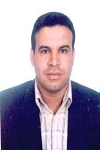
Biography:
Salah Er-Raki holds a PhD in agricultural water management from the Cadi Ayyad University. He was actually Professor at the Faculty of Sciences and Techniques, Cadi Ayyad University. His main research interests include the application of remotely sensed data in land-surface atmosphere models especially in arid semi-arid regions. He worked in several Funded European research projects (SUDMED, WATERMED, IRRIMED, PLEIADES, REC). He is an author and co-author of more than 40 per review publications and more than 100 papers in conferences and workshops. He serves also as an editorial board member and reviewer of several international scientific journals.
Abstract:
Estimates of crop water requirements using remote sensing data are essential in effective planning of irrigation water use in arid and semiarid regions. The Haouz plain that surrounds the city of Marrakech (Center of Morocco) is classified among regions in the country facing strong water shortages. This is mainly due the combined effect of persistent drought and the increase of water demands related to increase in irrigated surfaces, urbanization and tourism recreational projects. There is thus a crucial need to develop tools for better management of irrigation water use through accurate estimates of crop water requirement at a regional scale. Remote sensing can provide fundamental, new scientific information, where data can be obtained systematically over large geographic areas rather than just single-point observations. This work, which is part of the activities of the SudMed program and the International Joint Laboratory TREMA (http://trema.ucam.ac.ma), aims to derive crop water requirements maps from remote sensing data (SPOT, LANDSAT, MODIS,..) through the use of the relationships between the Normalized Difference Vegetation Index (NDVI) and crop biophysical variables such as crop coefficient, cover fraction.
Habitamu Taddese
Hawassa University
Ethiopia
Title: Application of geographic information systems in identifying potential sites for jatropha curcas production in Ethiopia
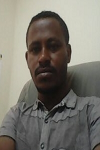
Biography:
Habitamu has completed his MSc degree in Geoinformation in June 2010. He studied forestry during his BSc degree education. He is currently working as an assistant professor and researcher in Wondo Genet College of Forestry and Natural Resources, Hawassa University, Ethiopia. He strives to increase his visibility as a young scientist in the fields of environment and renewable energy. He applies remote sensing and Geographic Information Science (GISc) in solving environmental problems and assessing natural resources including renewable energy reources. He has published 3 scientific papers in reputed journals and has additional two papers that are under review process.
Abstract:
Jatropha curcas L. is an oil bearing plant growing in tropical and subtropical regions of the world. This plant is considered to be a potential solution to the prevailing shortage of fossil fuel and the resulting environmental impacts. Cognizant of this, governments have given considerable attention to develop biodiesel technologies including that of jatropha. Development of biodiesel technologies has also attracted interest of national and international investors in Ethiopia. However, there is gap of information with regard to how much potential land can be allocated for biodiesel development. In this study, Geographic Information System (GIS) was used to identify those potential areas. Data of relevant environment factors influencing growth and productivity of jatropha such as climate, soils and topography were used for this purpose. Generally, results of overlay analysis for biophysical suitability evaluation using GIS identified 15.07%, 76.57% and 8.36% of the land as highly suitable, moderately suitable and not suitable for jatropha production, respectively. The main limiting factors identified in this study are elevation, climate and water logging condition of soils. Sensitivity analysis based on land use / cover criterion indicates that there is great variation in the area of land suitable for jatropha investment with a few changes in land use types that go not suitable due to theie ecological significance. In general, adequate land is available for jatropha investment in the country. However, allocation of land for jatropha production should be done based on the identified suitable sites. Keywords: GIS, land suitability, Jatropha curcas L., spatial modelling, Ethiopia.
Zhuokun Pan
Zhejiang University
China
Title: An IDL-based program for constructing time-series remote sensing data: towards high spatiotemporal applications

Biography:
Pan Zhuokun is currently a doctoral student in Zhejiang University. His research interests are mainly focused on remote sensing and geoinformation sciences in agriculture. Specifically, he has great interest in integrating remote sensing data and physical model to perform regional application, for the evaluation of agriculture suitability, risk, and yield improvement.
Abstract:
Research in time-series of remote sensing data is receiving increasing attentions. Research using relatively high spatiotemporal resolution satellite imagery was unprecedented. For the purpose of utilizing such high repeat cycle with relatively high spatial resolution satellite materials, in this paper, an IDL-based program was developed. The China’s HJ-1 A/B satellite data were employed for time-series construction. To construct a complete spatial time-series data with IDL, processing methodologies included Savitzky-Golay filter for smoothing, and linear-interpolation for daily NDVI imagery interpolation. Methodologies employed in this program are quite capable in maintaining essential shape of NDVI trajectory temporally. By analogy to commonly used multi-temporal remote sensing data (e.g., vegetation-index product derived from MODIS, AVHRR), application cases in utilizing HJ-1 A/B NDVI time-series were presented. It was also tested applicable for most multi-temporal remote sensing data for time-series construction. With the availability of relatively high spatiotemporal satellite data, the authors are having a positive expectation at utilizing such data to advance the time-series analysis in remote sensing community.
